Samsung S90F is an excellent representative of the premium mid-range in the world of OLED TVs. We have an organic matrix here that guarantees perfect contrast – and no matter how much LCD manufacturers try with local dimming in Mini LEDs, this black simply cannot be replicated. The S90F shows its class without any compromises. Compared to last year's model, we get a slightly brighter WOLED panel, which in favourable conditions can reach up to 1200 nits. This is a result that suffices for comfortable viewing of HDR materials in most scenes at reference quality – especially on streaming platforms such as Netflix. The picture quality here is very high, regardless of whether we are watching a movie, playing on a console, or streaming a sports broadcast. By the way – versatility is one of the biggest advantages of this model. With 144 Hz refresh rate, very low input lag, and a full package of gaming features (including functional HGiG and the unique Game Motion Plus motion smoother), it's hard to complain about anything here. The Tizen system performed really well on the S90F. It has its limitations – primarily the closed ecosystem and a smaller selection of apps than Google TV – but if you mainly use the most popular services, this shouldn't be an issue. A big plus is also the remote, which can operate most connected devices – even despite the lack of a numeric keypad. There are downsides too. The built-in media player has issues with some formats, and the anti-reflective coating typical of WOLEDs doesn’t handle strong light very well – reflections can be noticeable. We also do not have support for DTS and Dolby Vision, but this is a standard at Samsung that's been expected for years. So is the S90F with a WOLED panel the perfect TV? No – but it really is very close. It is one of the most polished and complete OLEDs in this price range, which can easily handle any content, from a series on Netflix, to console gaming, to a Sunday match.
- Matching (Score)
- Our verdict
- TV appearance
- Where to buy
- Contrast and black detail
- HDR effect quality
- Factory color reproduction
- Color reproduction after calibration
- Smoothness of tonal transitions
- Image scaling and smoothness of tonal transitions
- Blur and motion smoothness
- Console compatibility and gaming features
- Input lag
- Compatibility with PC
- Viewing angles
- TV efficiency during daytime
- Details about the matrix
- TV features
- Apps
- Playing files from USB
- Sound
SAMSUNG S90F (WOLED) vs LG OLED B5
Direct compare
S90FAE
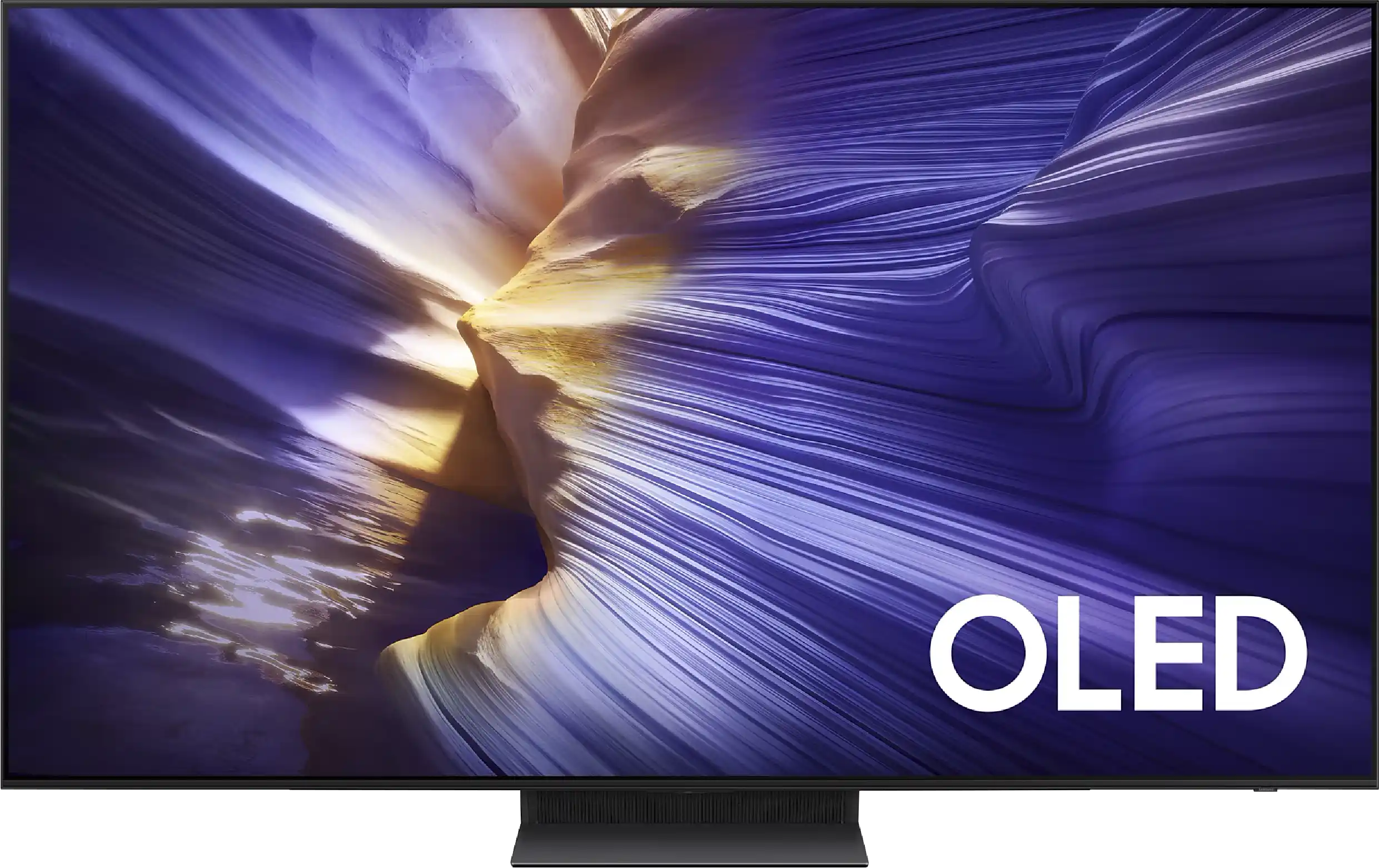
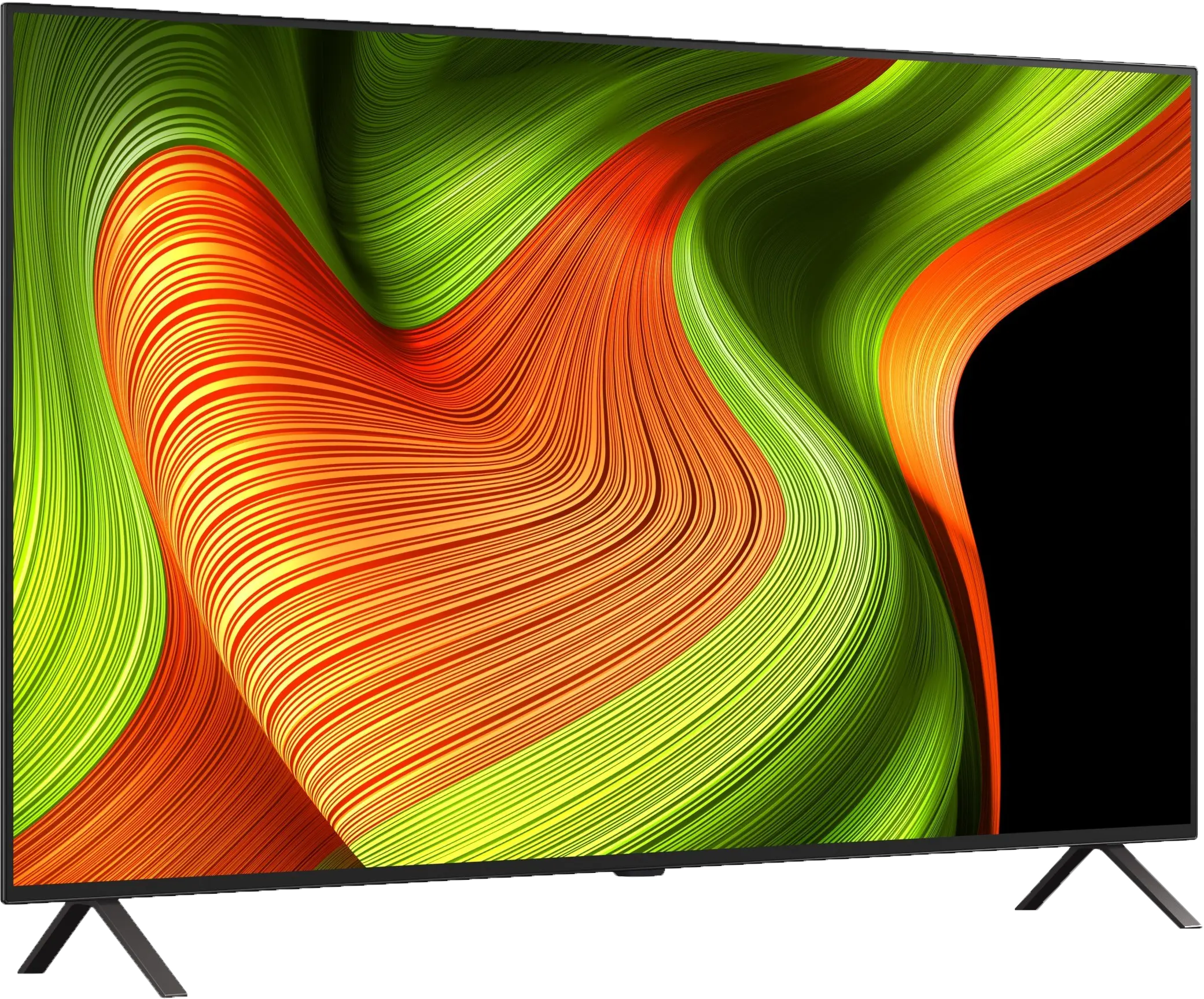
Panel type: WRGB OLED
Resolution: 3840x2160
System: Tizen
Model year: 2025
Complete the survey to find out the result

Panel type: WRGB OLED
Resolution: 3840x2160
System: WebOS
Model year: 2025
Complete the survey to find out the result

Overall rating
8.1
7.8
Movies and series in UHD quality
8.3
7.9
Classic TV, YouTube
8.7
8.6
Sports broadcasts (TV and apps)
8.5
8.5
Gaming on console
9.6
9.2
TV as a computer monitor
8.6
7.6
Watching in bright light
6.1
4.9
Utility functions
7.5
8.3
Apps
8.7
8.7
Sound quality
7.4
7.0
Complete the survey to find out what fits your preferences
Advantages
Stunning black and contrast
High brightness for an OLED TV - 1200 nits peak brightness
Very good motion smoothness - 144Hz OLED display
Low latency - input lag 5ms
Gaming features: 4x HDMI 2.1, VRR, ALLM, Game Motion Plus, etc.
PiP function and great support for external devices with solar remote control
Expanded operating system: Tizen
Pleasant sound with slightly noticeable bass
Perfect black and contrast
Pleasant HDR image
Excellent colour reproduction capabilities
120Hz OLED panel - great motion smoothness
4 HDMI 2.1 ports and full support for gamers (VRR, ALLM, Dolby Vision Gaming, HGiG)
Very low input lag
Proper content scaling and good digital processing
Convenient webOS system with Magic remote
Built-in USB recording function from the built-in DVB-T/T2 tuners
Disadvantages
Issues with playback of certain formats from USB.
Subtle degradation in tonal transitions (performs worse than the previous S90D)
Lack of support for DTS:X – an external amplifier is required for full support of this format
Average brightness and poor performance in bright rooms
No support for DTS formats
Different versions of the remote in derivative models – hard to predict which version we will get
Our verdict
LG B5 is a really good OLED TV that shows you don’t need to spend a fortune for very good quality. It offers deep blacks typical of organic panels, very good colour reproduction – especially after calibration – and pleasant HDR movie watching experiences. All of this makes for evening screenings that can deliver cinematic emotions even without reaching for much more expensive screens. The fluidity of the image and the set of features for gamers also deserve recognition. The 120 Hz panel, low input lag, full support for HDMI 2.1, variable refresh rate, and Dolby Vision Gaming mode make the B5 a very versatile screen – great for both gaming and watching sport. The friendly webOS system, along with the Magic remote, provides convenient access to content and makes operation easier. However, not everything is perfect. Compared to the B4 model, there is a slight drop in brightness, especially in very bright rooms. For some users, the lack of DTS audio support may also pose a problem, which could necessitate some workarounds when connecting Blu-ray players. Still, LG B5 remains one of the most sensible choices for those looking to step into the world of true cinema – without overpaying, but also without making major compromises. It’s a screen that doesn’t need to prove anything – it simply delights the eye with great picture quality and works as it should.
TV appearance
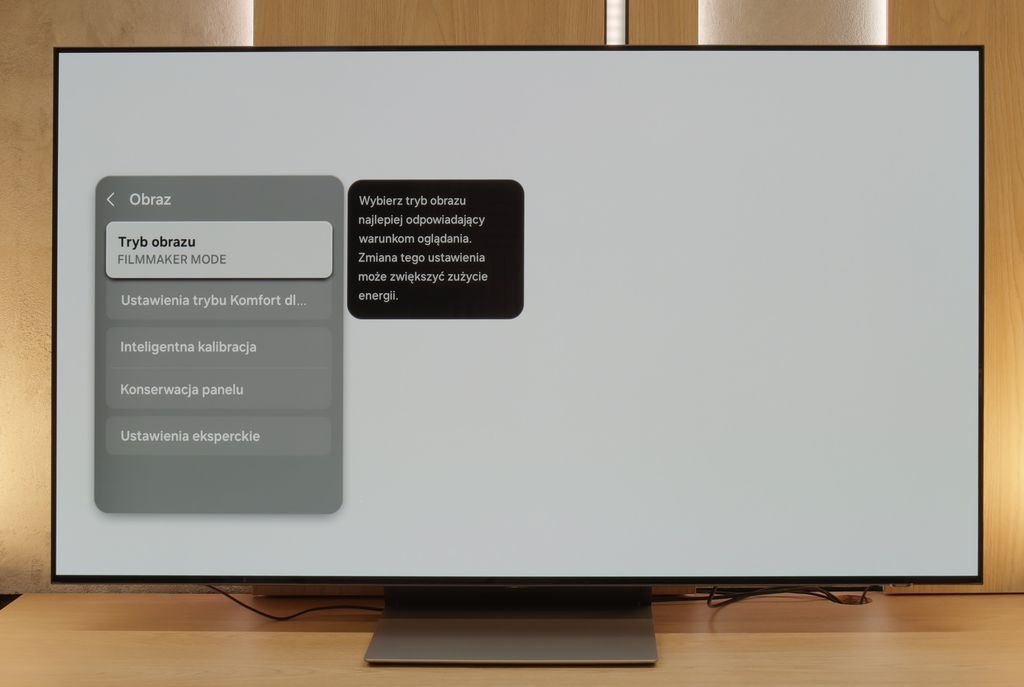
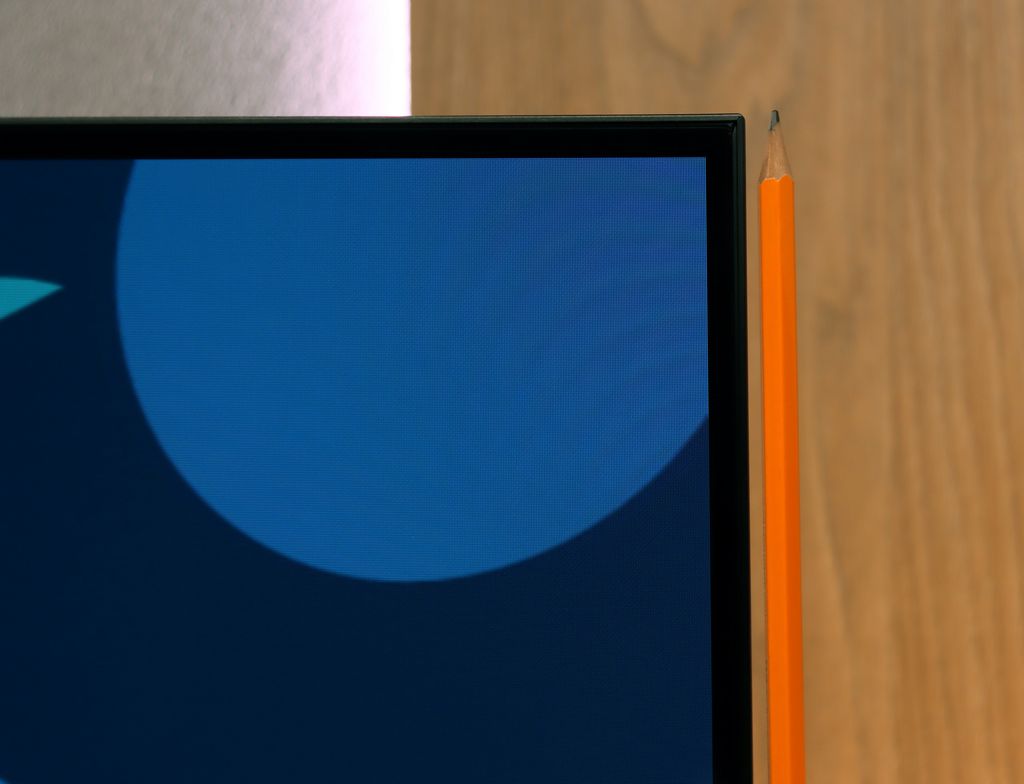
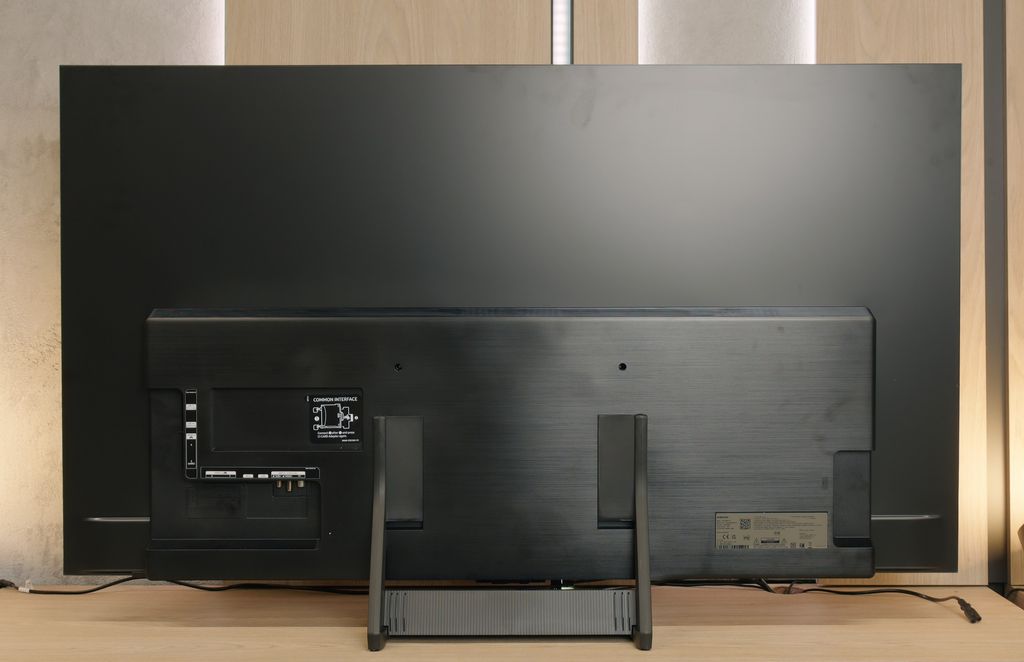
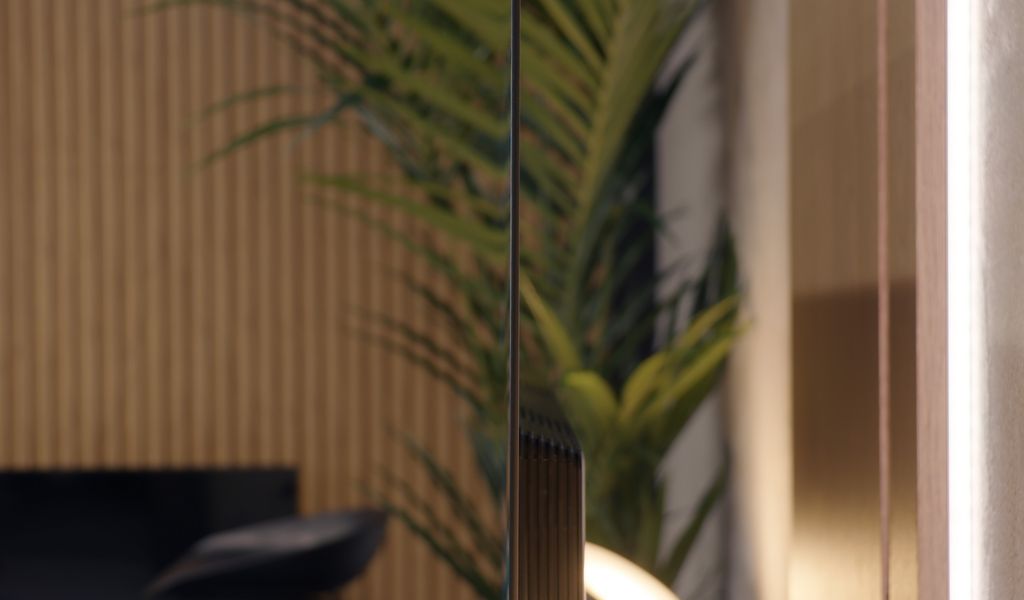
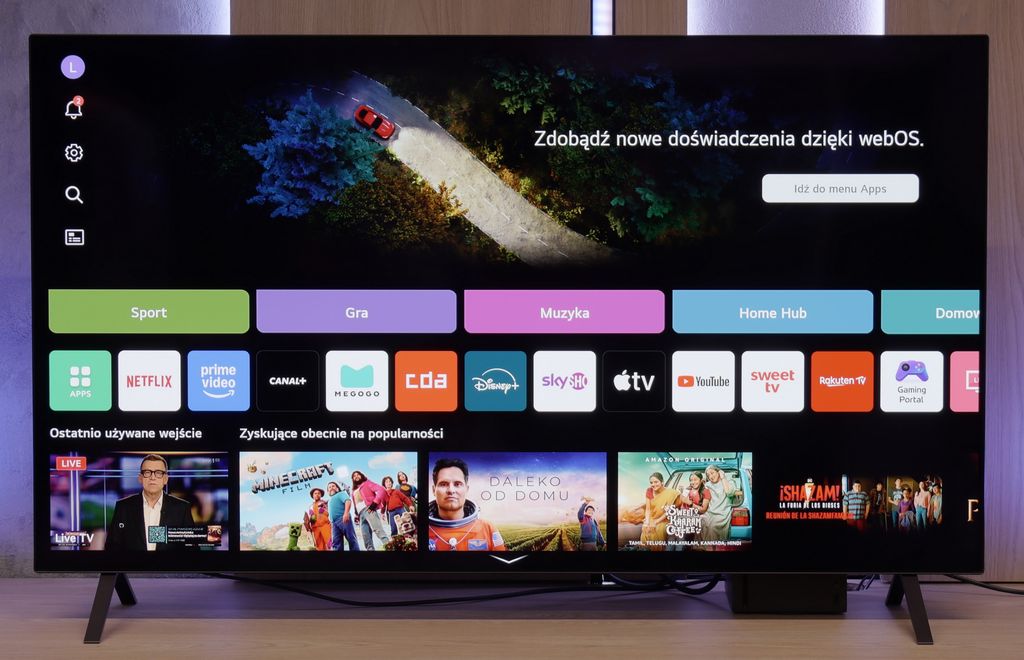
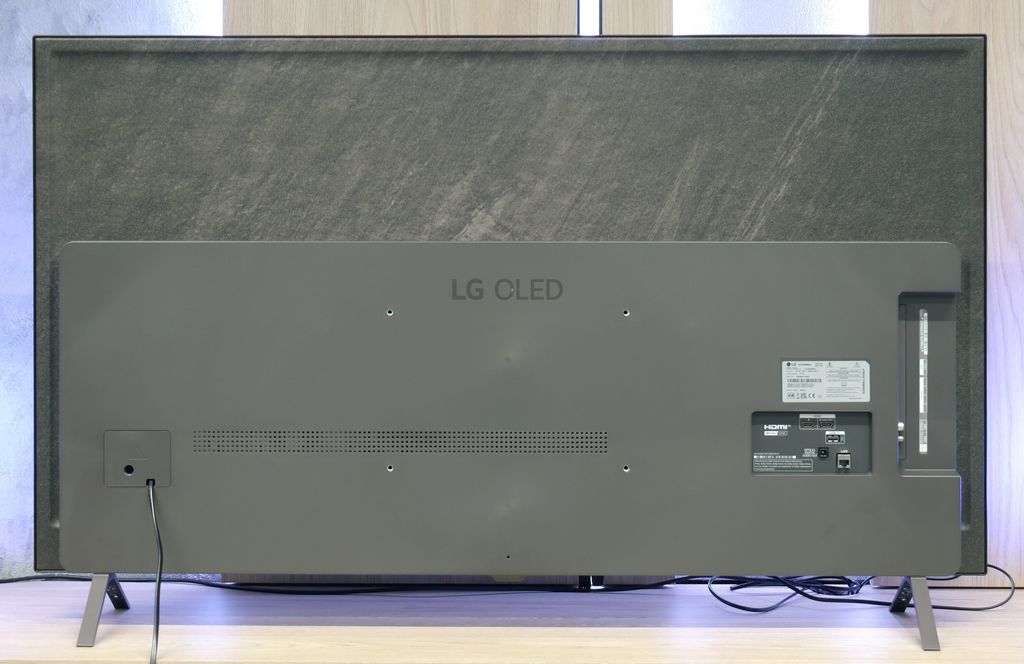

Contrast and black detail
10/10
10/10
Contrast:

Result
∞:1

Result
∞:1

Result
∞:1

Result
∞:1

Result
∞:1

Result
∞:1

Result
∞:1

Result
∞:1

Result
∞:1

Result
∞:1
Halo effect and black detail visibility:


In the case of the Samsung S90F, we are dealing with an interesting situation: nearly all size variants have been equipped with WOLED panels, except for the 65-inch version, which received a QD-OLED panel. In this test, we analyse the version with the WOLED panel produced by LG Display, but the question remains; Does this affect the quality of black and contrast in this part of the test? In practice – it does not. Regardless of the technology used, both panels can produce perfect black and infinite contrast. This is exactly what we expect from any top-tier television. Watching a series in the evening, in a completely dark room, is sheer pleasure. The television easily separates bright elements – such as reflections or background lights – from the deep, dark parts of the image, without creating any halo or brightness issues that high-end LCD televisions still struggle with. This is where OLED technology shows its strength – and the S90F is no exception. When it comes to black and contrast, we can't fault it at all.
If you're looking for changes compared to last year's LG B4, we’ll clear up any doubts straight away – you won’t find any in this category at all. And that’s a good thing. Because how do you improve something that is already close to perfection? The LG B5, as a WOLED organic panel television, offers black scenes as dark as tar and contrast that’s hard to find even in the most expensive LCD screens. The screen is as clear as a bell – no bleeding, no streaks, no halo effects that can ruin the atmosphere in cinematic scenes. Here, everything is in its place. Details separate from black with surgical precision, nothing blurs together, even in the most demanding sequences from films like The Revenant or Oblivion. This is the type of television that can truly enchant you, especially when the room goes completely dark. When the lights go out, the LG B5 takes centre stage – and it does so wonderfully. In these conditions, OLED shines the brightest, and even top-end LCD models – despite advanced dimming and hundreds of zones – simply fall behind.
HDR effect quality
7.2/10
6.2/10
Luminance measurements in HDR:

Result
1099 nit

Result
1177 nit

Result
1252 nit

Result
1183 nit

Result
577 nit

Result
587 nit

Result
593 nit

Result
628 nit

Result
589 nit

Result
470 nit
Scene from the movie “Pan” (about 2800 nits)


Scene from the movie “Billy Lynn” (about 1100 nits)
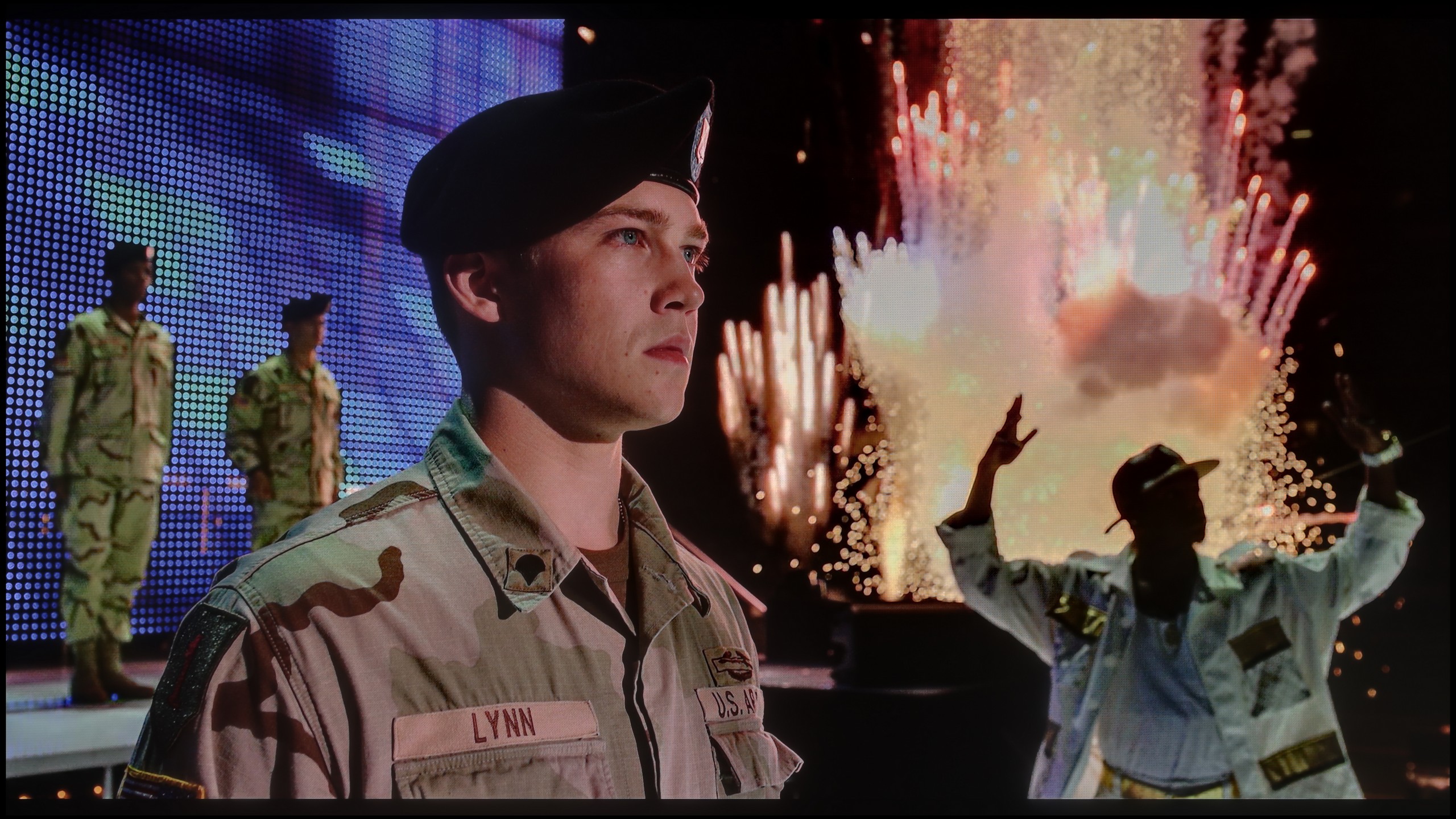

Static HDR10


Dynamic: HDR10+
Dynamic: Dolby Vision


HDR luminance chart:
LG OLED B5
Luminancja HDR
Luminance of RGB colors
SAMSUNG S90F (WOLED)
Luminancja HDR
Luminance of RGB colors
Does the S90F handle not only blacks but also bright parts of the image? Definitely. The stories about OLEDs as "dark screens" can slowly be regarded as myth. The Samsung S90F, like the LG C5 based on a very similar panel, achieves brightness exceeding 1000 nits. This is a value more than enough to enjoy impressive and dynamic HDR images – both in movies and series. Most of the scenes we tested look stunning, with well-defined highlights and high contrast. Of course, OLED technology still has its limitations – in very bright, full-screen sequences, such as the test card from the movie The Meg (photo 5), the television may noticeably dim the image. However, it should be emphasized that such scenes are rare. It can be said that the HDR effect is good enough that even mid-range OLED models like the S90F can provide a cinematic experience in the home living room.
LG B5 is a moderately bright OLED TV. Regardless of the scene – it can generate about 500 nits of peak brightness. And interestingly, it does this even in full-screen shots flooded with white, where most OLEDs usually struggle. So, is this screen suitable for HDR films? Yes – absolutely, because such brightness really allows you to feel the magic of HDR effects. However, it’s worth noting that compared to last year's B4 model, the new B5 is darker – by about 100 nits. It may seem like a small amount, but at such average peak values, it makes a significant difference. Fortunately, the TV makes up for it with another strength – excellent coverage of the DCI-P3 and BT.2020 colour gamuts. This means HDR films look truly vibrant, lively, and impressive even in more demanding scenes.
Factory color reproduction
7/10
8.2/10


Factory Mode
After calibration


Factory Mode
After calibration
Samsung S90F, like most modern televisions, offers many picture modes, but – following our testing tradition – we checked it out in the best one, which is the Filmmaker mode. Thanks to this, the image looks much more natural than in the default, often oversaturated settings. It was neither overly saturated nor artificially dimmed – simply closer to what one should see. Of course, “more accurate” doesn’t mean “perfect”. Unfortunately, our S90F had significant issues with white balance, particularly in the blue color range, resulting in a slightly yellowish filter being applied to most scenes. Someone might say it looks more “filmic” – because it’s warmer – but let’s not kid ourselves, George Lucas didn’t film Star Wars in sepia 😉 (you’ll find a comparison with the scene below as always).
Additionally, in HDR materials, there was an issue with brightness management. The EOTF curve showed a clear “spike” in brightness – the television brightened the image more than it should have, causing some effects to look too intense and deviating from the reference. Fortunately, some of these problems can be eliminated through professional calibration – you’ll read about its effects later in the review.
B5 was tested in Filmmaker mode and… we’d love to see more TVs like this right out of the box. Seriously. The white balance is very well set – there’s practically nothing to nitpick. Well, if you really want to, you might notice a slight deficiency in blue, which can make the overall picture have a slightly yellowish tint. But that’s just our editorial nitpicking. Most of you probably won’t even notice. We also have minimal reservations about brightness management in HDR format. The EOTF curve – which is responsible for how the TV distributes brightness across the scene – sits just below ideal. In practice, it may happen that the darkest parts of the image appear too dark and simply… disappear. But these are details that only come out in measurements. Generally: we are impressed. But we also know that LG TVs respond very well to professional calibration. You can extract nearly reference-quality picture from them, so – although it’s already very good out of the factory – we took the liberty to go a step further and fine-tune everything to the max.
Color reproduction after calibration
9.2/10
9.1/10
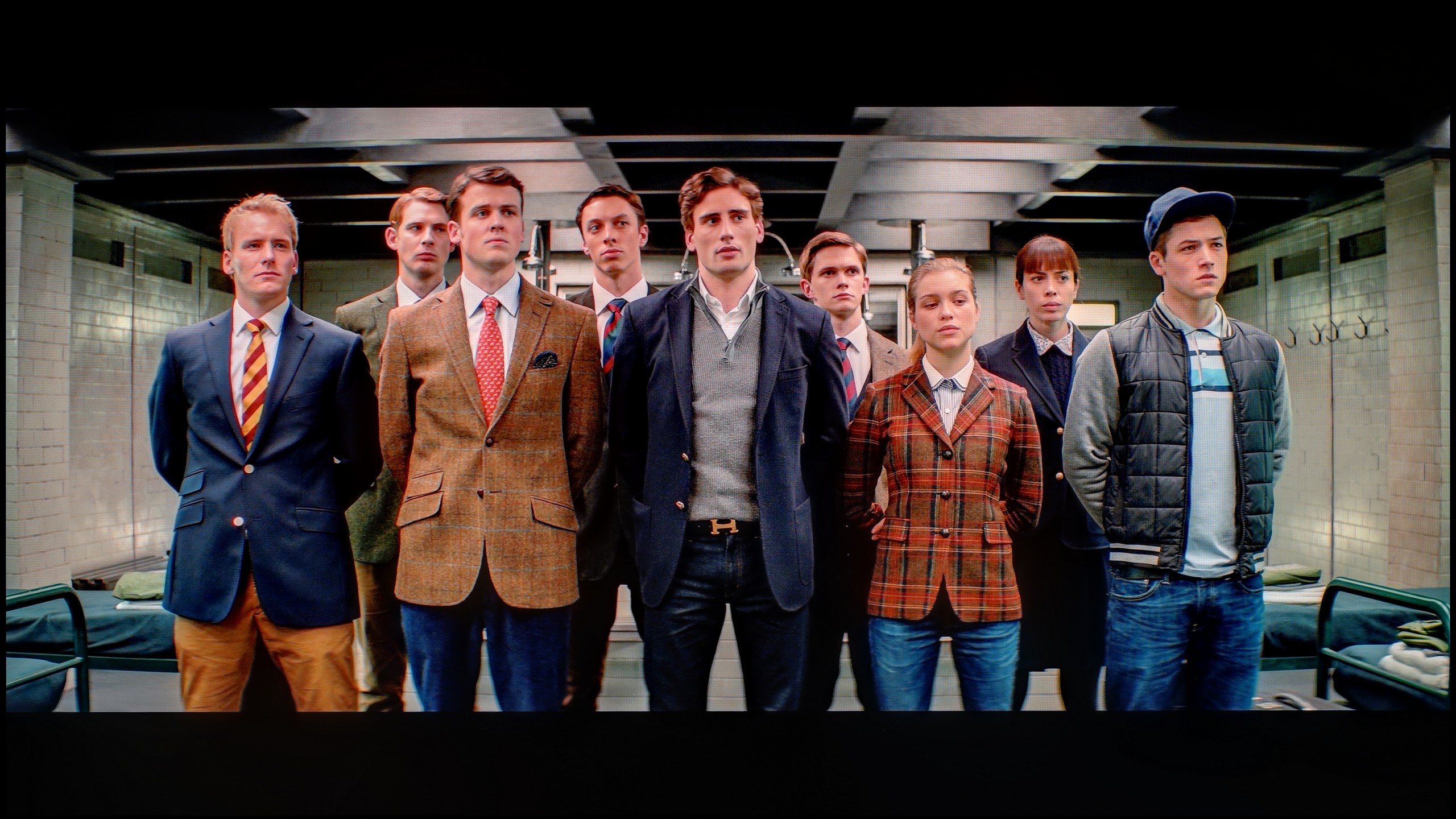
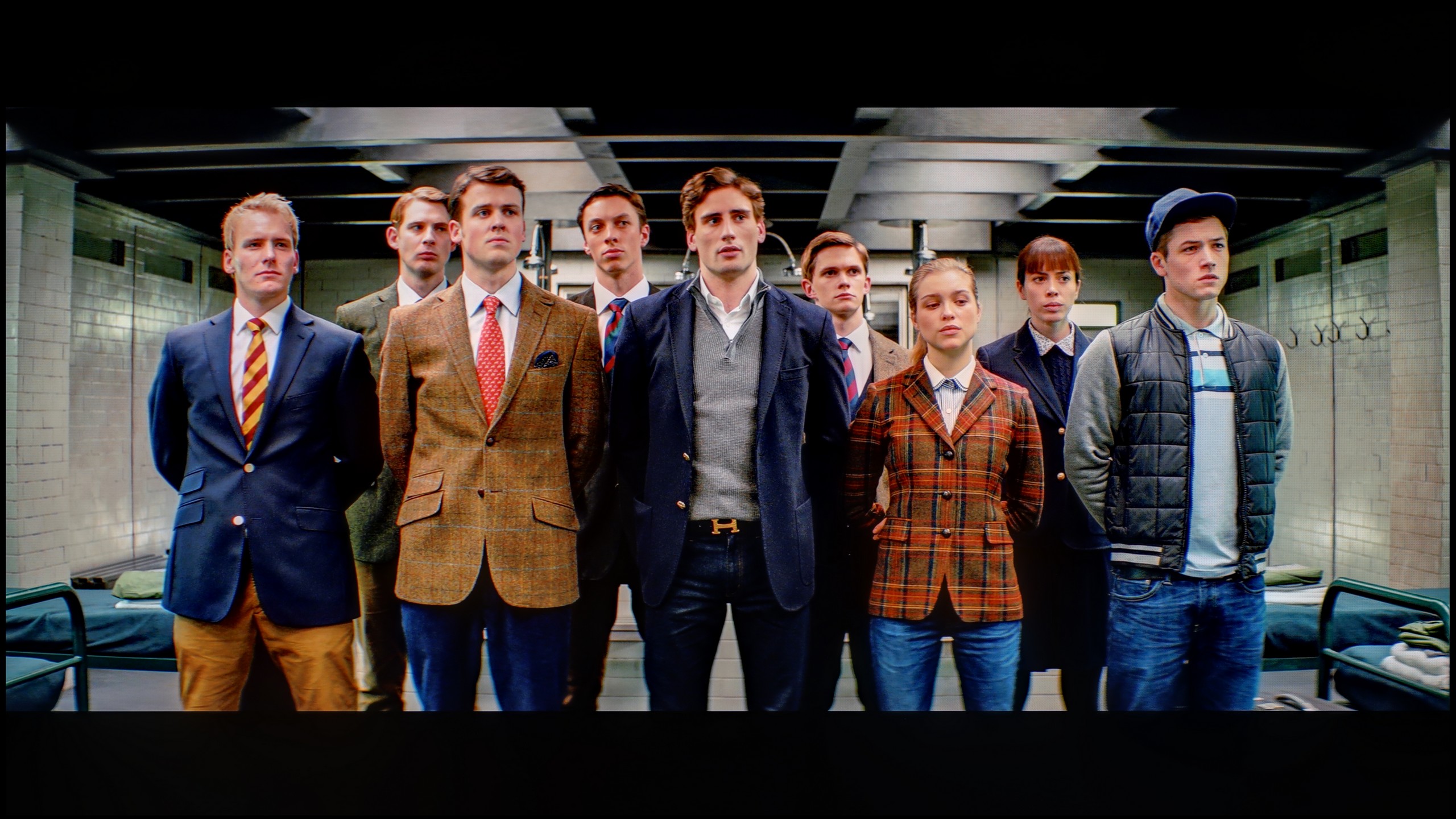
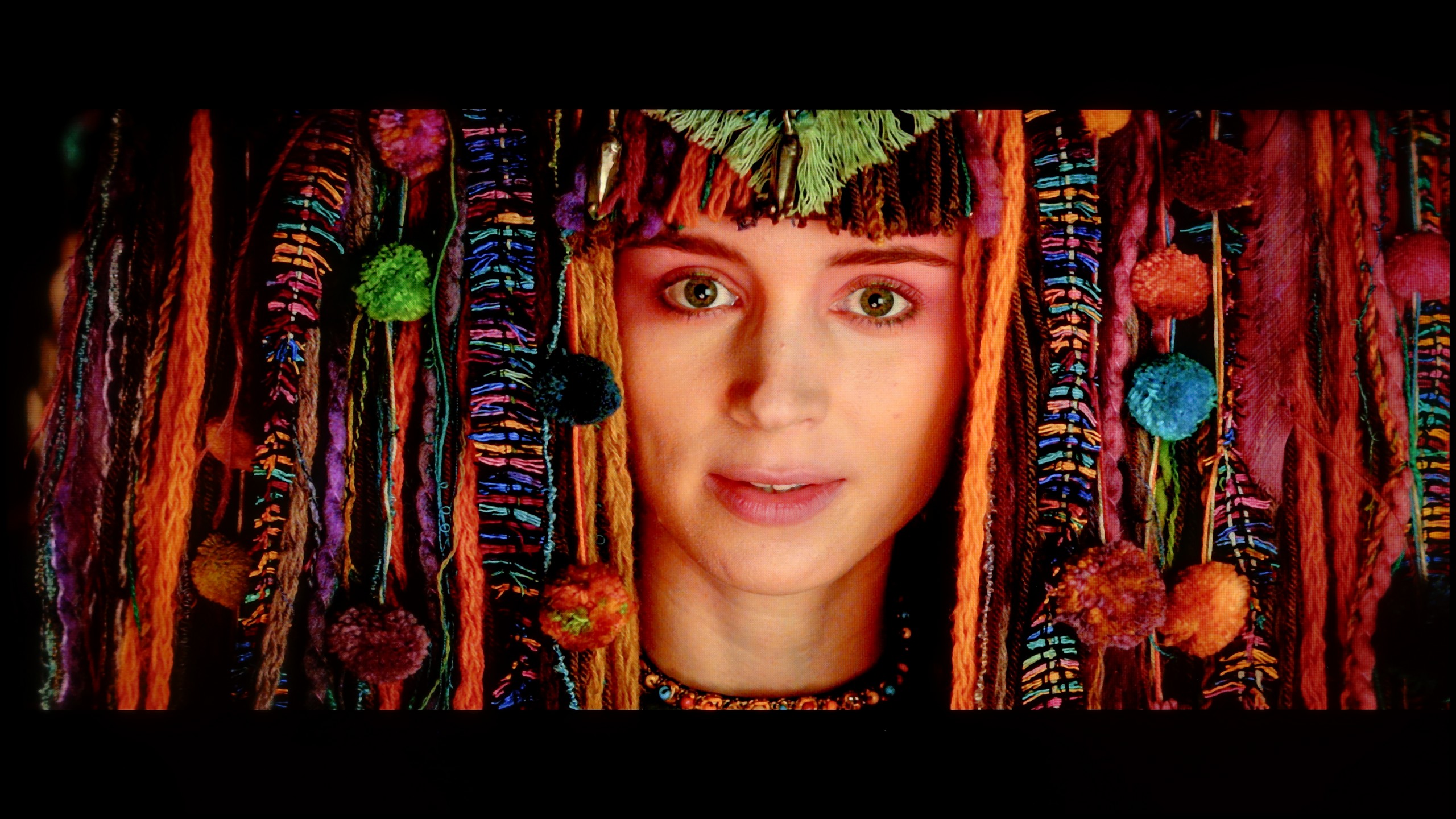
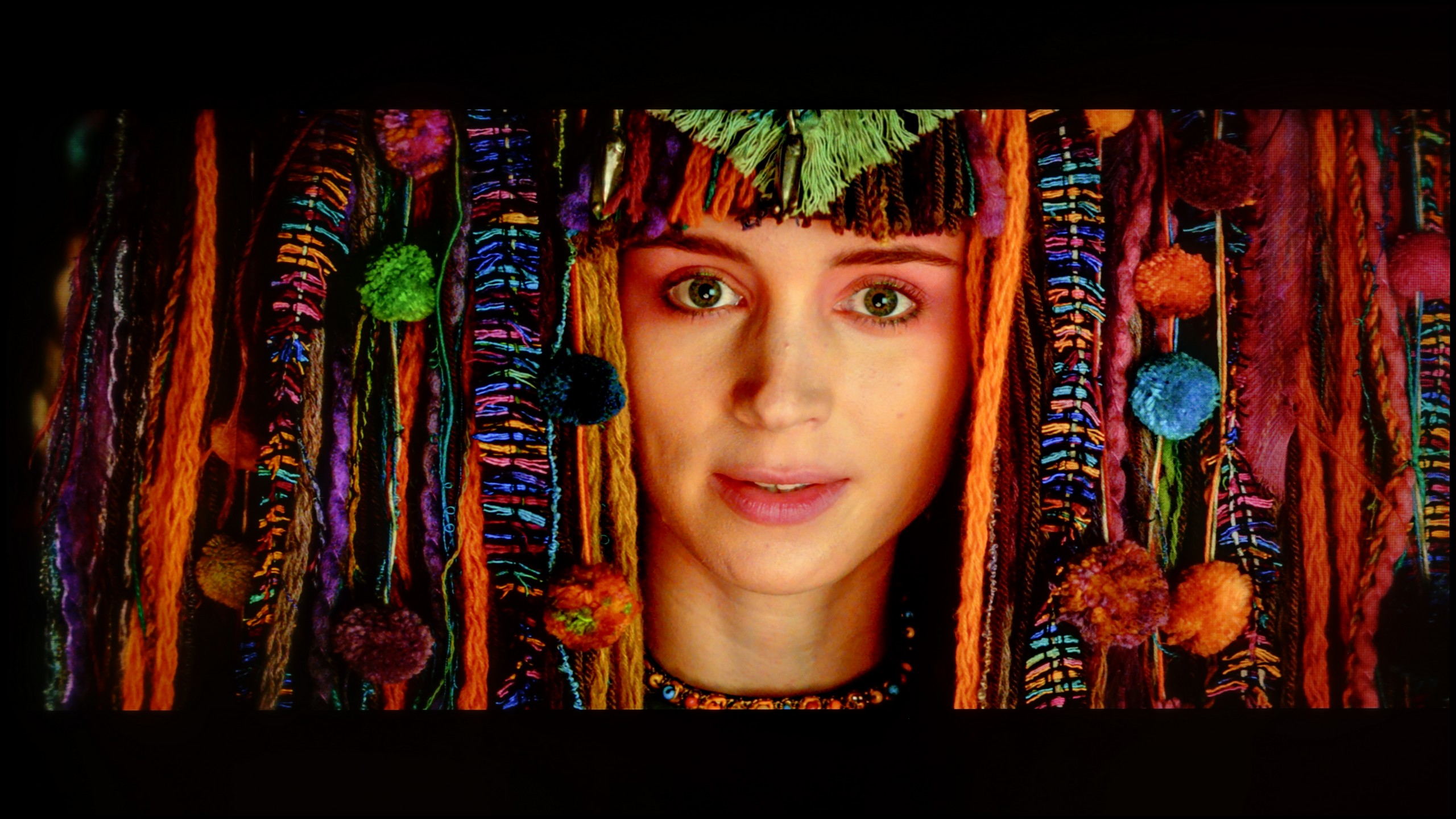
After calibration, we managed to eliminate practically all the previously mentioned errors. Older movies in SDR quality finally look like they should – without the sepia effect or artificial aging of the image. The atmosphere of the classics is back in place (no thanks needed, Star Wars fans), and the colours no longer resemble an Instagram filter.
One of the key changes was also the improvement of brightness characteristics in HDR content. We managed to control the EOTF curve in almost a reference manner. Admittedly, the most demanding users may detect minimal deviations in brightness, but honestly – most viewers won't even notice that. And it's no surprise because the vast majority of errors fall below the ΔE 3 value, which is below the threshold of visibility. After calibration, the S90F (WOLED) becomes a truly excellent display – one on which you can enjoy nearly perfect image quality.
We have to admit that we didn't have much work with the LG B5. It's one of those TVs that look good right from the start, but after calibration… they can really impress. The white balance was nearly perfect – down to a level of errors invisible to the human eye, unless you're a professional colourist with a magnifying glass at the screen. We also managed to control the TV's tendency to slightly dim the darkest details, especially in HDR scenes. After proper tuning, everything looks cohesive: blacks remain deep but don't swallow information. Highlights maintain a natural sparkle, and colours are true to the director's vision. This is truly one of those models that show you don't have to spend a fortune to have an almost reference-quality image. If you can opt for professional calibration – it's definitely worth it for the B5.
Smoothness of tonal transitions
7.3/10
7.2/10
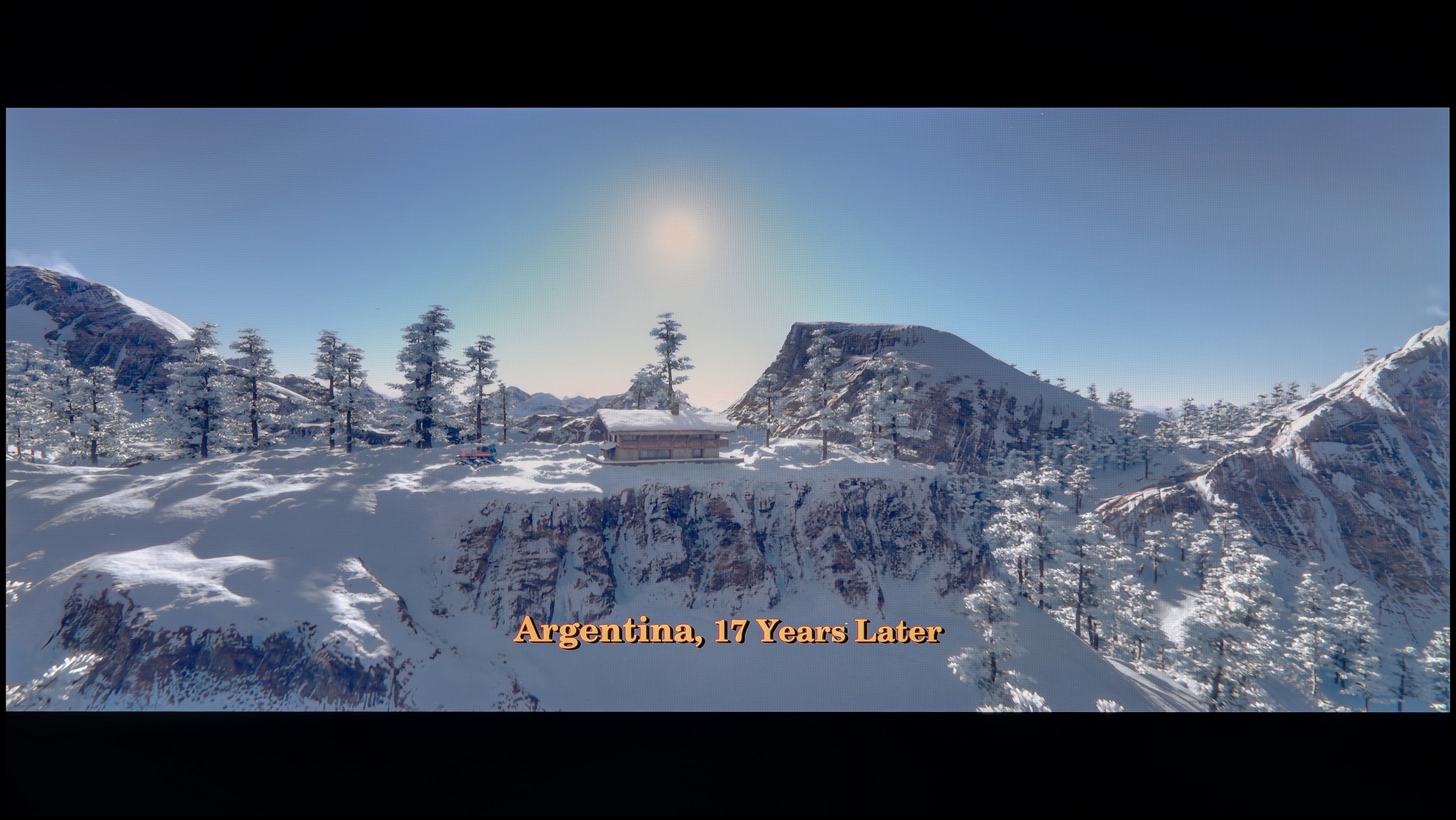



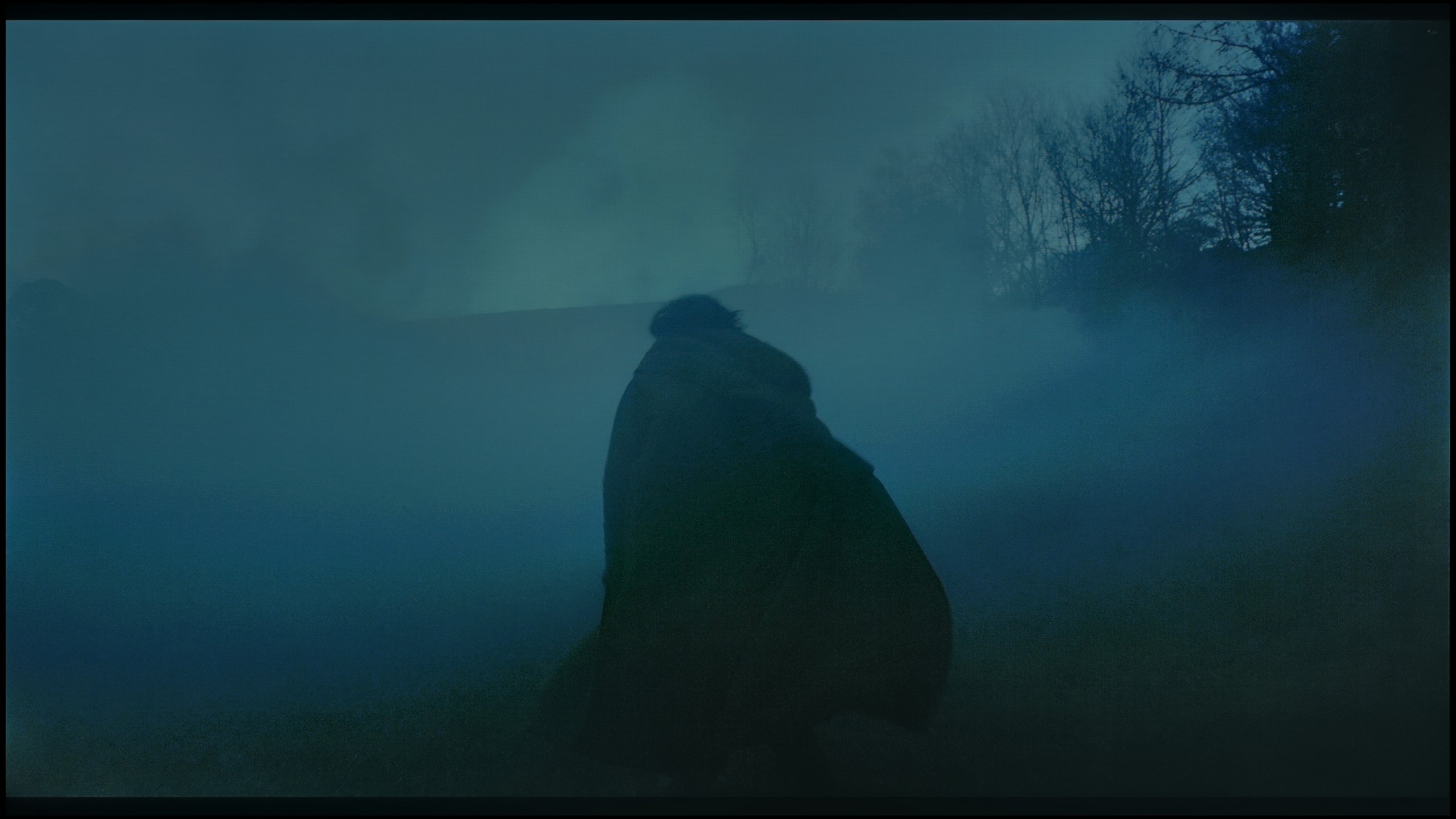
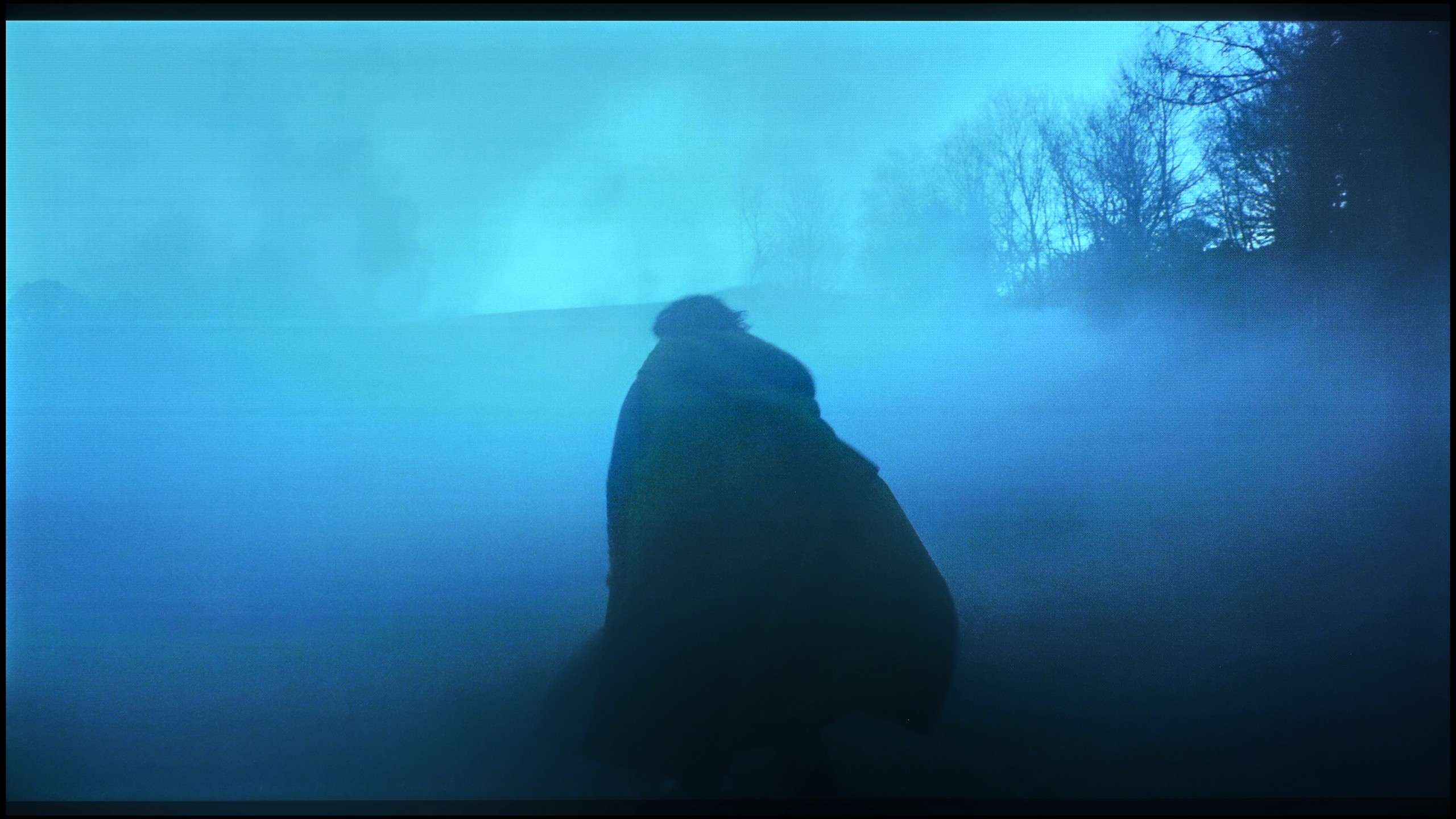

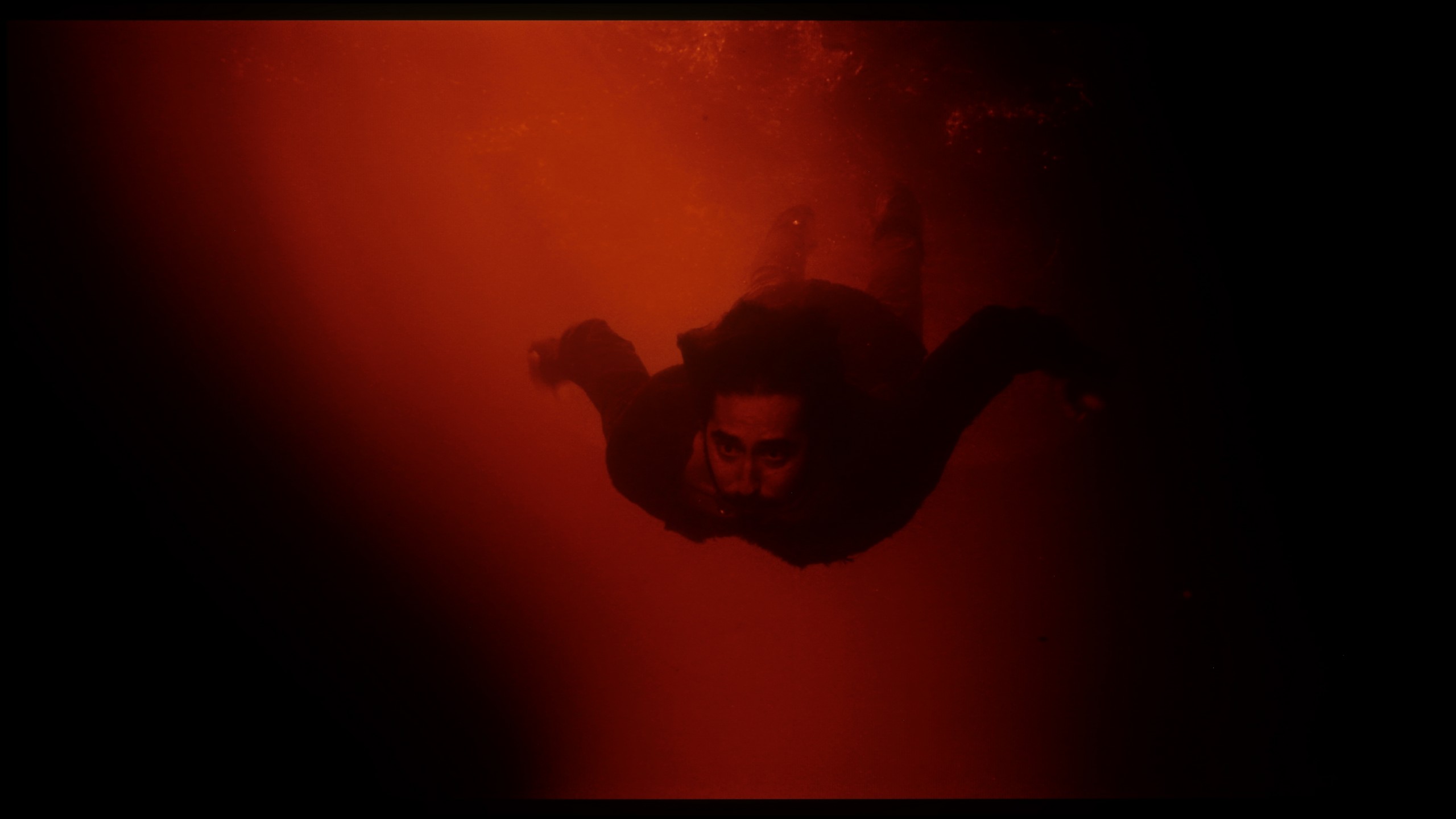




No and here we must honestly admit – the S90F has somewhat let us down. Compared to last year's S90D model with a WOLED panel (very similar to the one used this year), this year's Samsung performed worse. And this is not only against its main competitor, LG C5, but even when compared to its older brother. The biggest issues arise in dark scenes, where difficulties with smooth colour transitions are noticeable – the screen slightly steps the tonal transitions, causing some sections to lose their naturalness. We’re not sure what exactly went wrong – perhaps it's a software issue or a different processing algorithm. It's a shame, because we hoped that the level from last year would at least be maintained. Unfortunately, it's a step backwards.
LG B5 handles colour gradation quite decently. In bright scenes, where we have smooth transitions between skin tones, the sky or background, the TV blends colours seamlessly and without hiccups. At first glance – it’s good, particularly considering the price. But just reach for more challenging material – those darker, more demanding scenes with a lot of subtle transitions – and the problems begin. Small artifacts appear, false contours, slight thickening. It’s still not at a level that blinds or distracts from the plot, but the difference compared to more expensive WOLED models – and even more so QD-OLED screens – becomes noticeable.
Image scaling and smoothness of tonal transitions
7.5/10
7.5/10
Smooth transition function
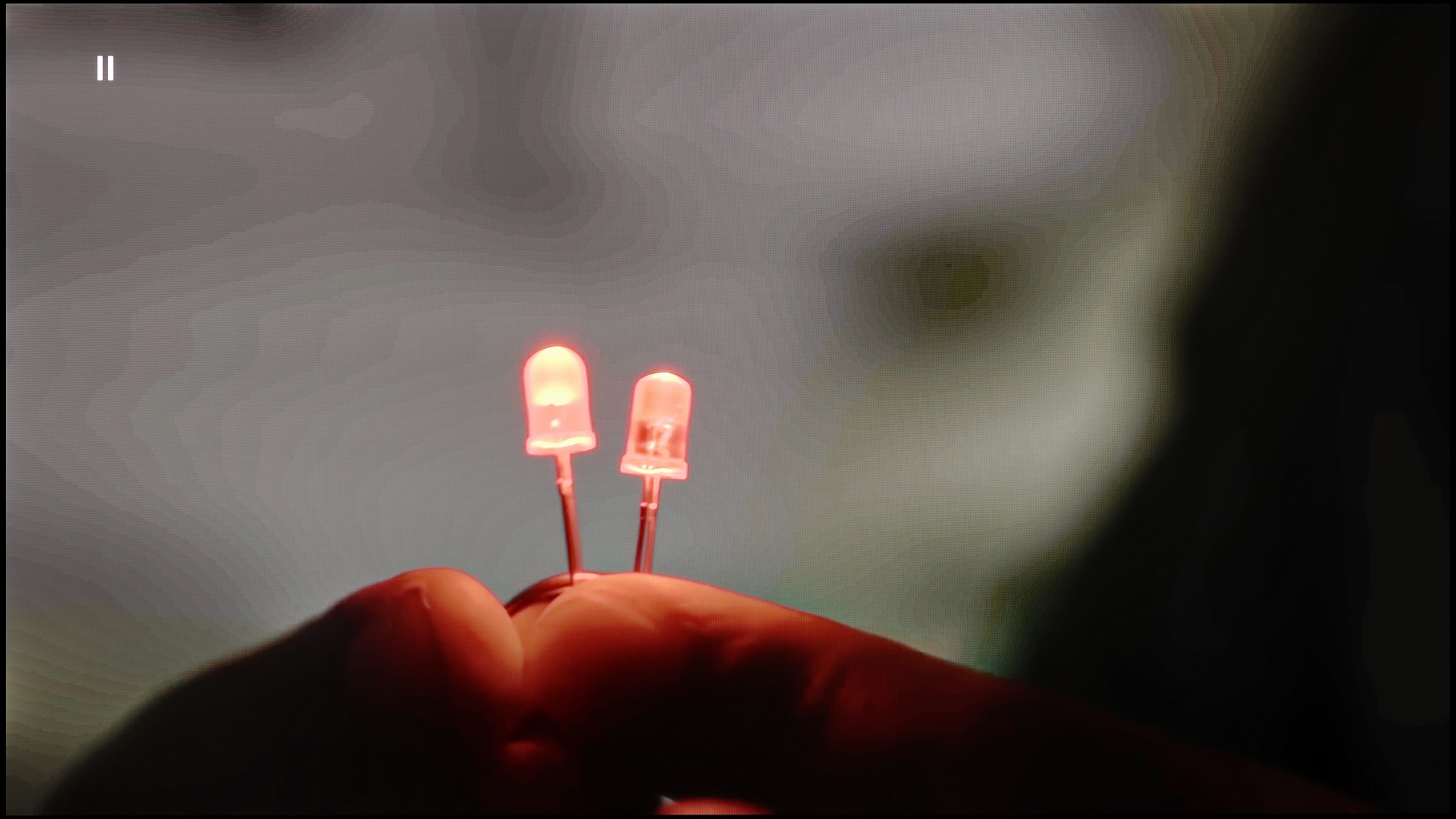
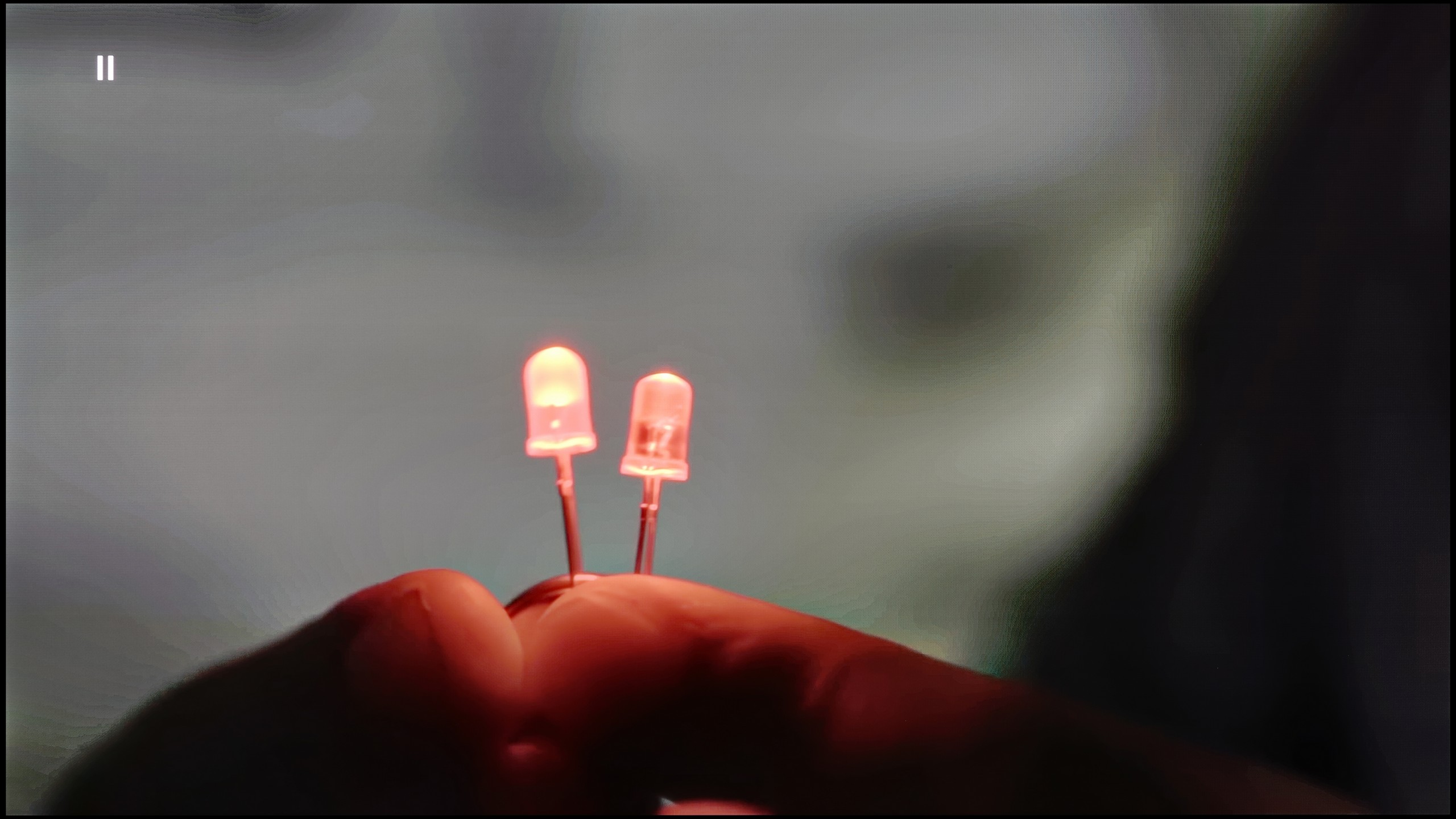
Image without overscan on the SD signal
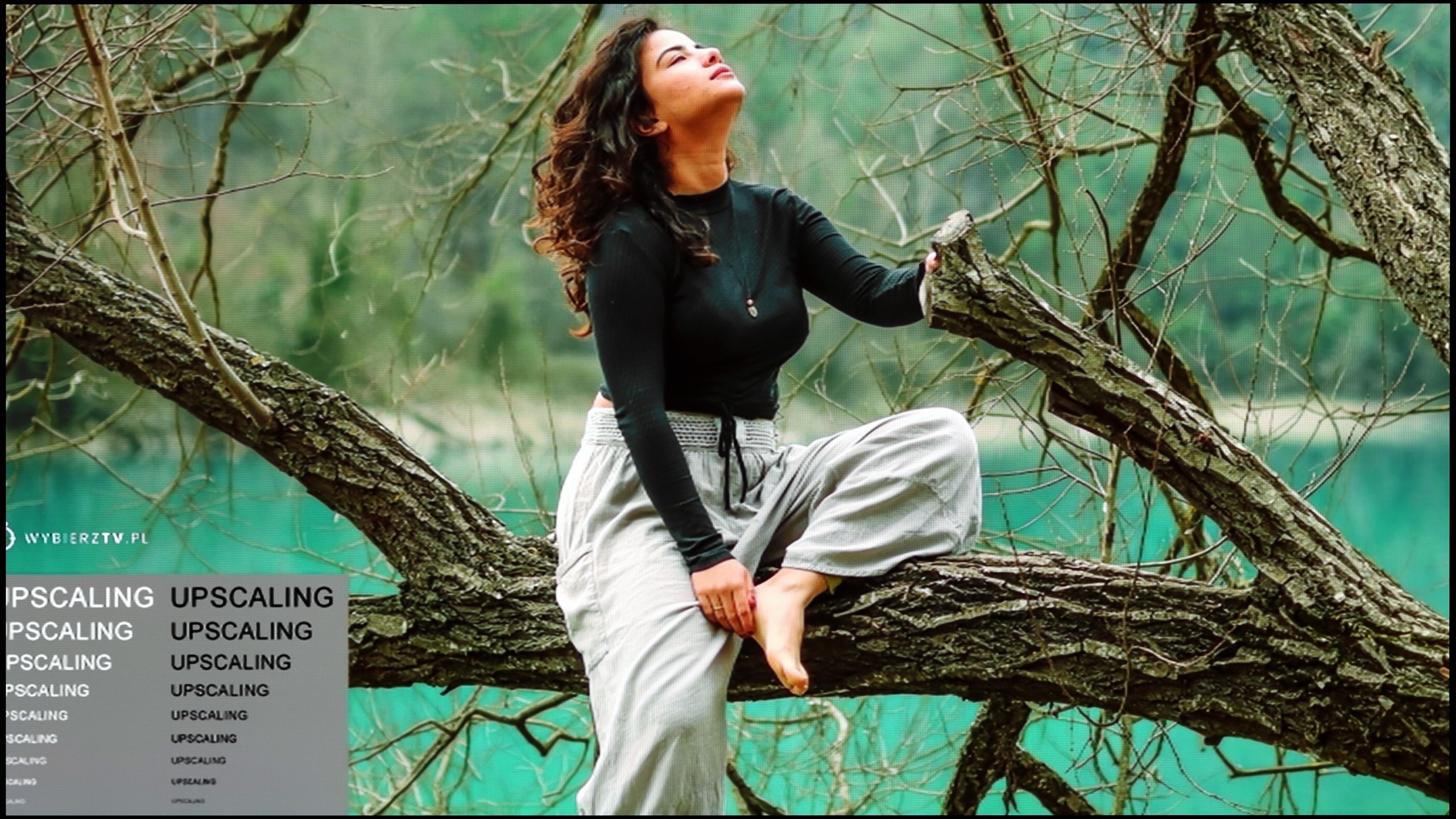

Digital Image Processing in S90F:
Fortunately, Samsung, like in most of its models, manages to effectively tackle the unwanted posterisation effect in the S90F. The function responsible for this element is noise reduction, which does a pretty good job of smoothing tonal transitions and eliminating unnatural colour blending – of course, within its capabilities. Unfortunately, it works quite aggressively, so using it comes with trade-offs. In addition to improving gradation, it can also remove film grain or slightly soften facial features. In this case, the choice is yours – do you prefer a more "clean" image, or do you care about preserving the original texture of the material.
Image Scaling in S90F:
In this year's model, Samsung has implemented its proprietary AI processor – NQ4 Gen3, which really handles upscaling quite well. In our test scenes, the TV effectively "pulled up" lower quality towards artificial 4K – the image was more enjoyable to view, and the differences in sharpness between native and scaled content were minimal. Unfortunately, behind all this AI marketing façade lies a certain shortcoming. The S90F struggles with overscan. If you reach for truly archival material – e.g. a VHS tape of your parents' wedding – you have to reckon with the fact that the lower part of the image may get cut off. The function to adapt the image to resolution simply does not work as it should here.
LG B5 really surprised us positively in terms of handling lower quality content. Thanks to the enhancement and smoothing features, HD or even SD materials come to life. Importantly – when this option is turned on at the "low" or "medium" level, we don’t get the impression that the image is artificially softened or overly smoothed. Details remain in place, film grain doesn’t disappear, and the edges of objects don’t look washed out 😉. It’s a really useful tool – especially if you’re watching free-to-air TV, archival materials, or content from YouTube in lower resolutions. The picture is clear, consistent, and simply pleasant to the eye.
Upgrading as such works very well – even low-quality content is reproduced with surprising fidelity. Unfortunately, it’s not without a minor hiccup. Although the menu has an option to turn off overscan, the television still has issues correctly displaying very low-resolution images. It’s a minor detail, but when watching older materials – it can be annoying.
Blur and motion smoothness
8.5/10
8.5/10
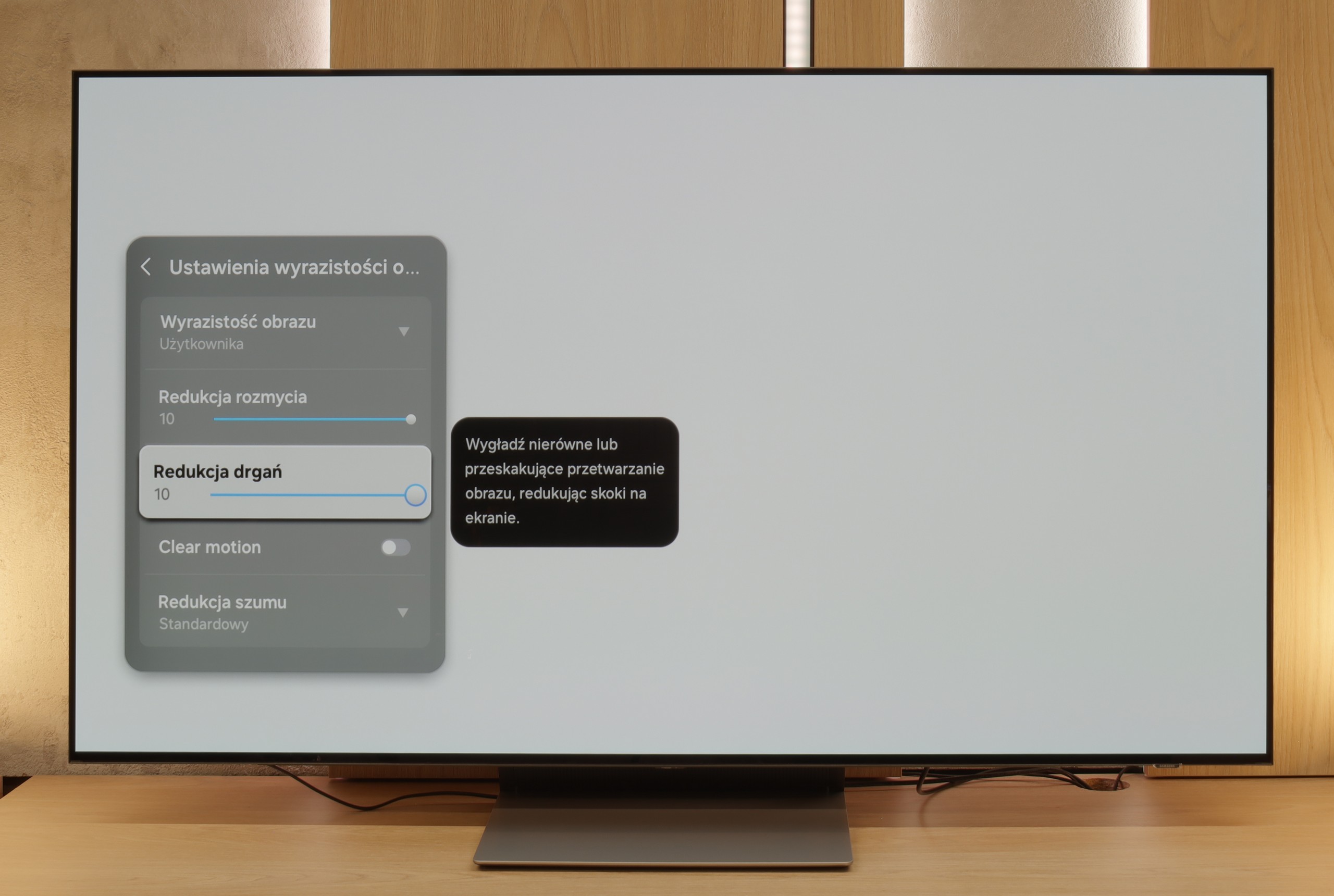
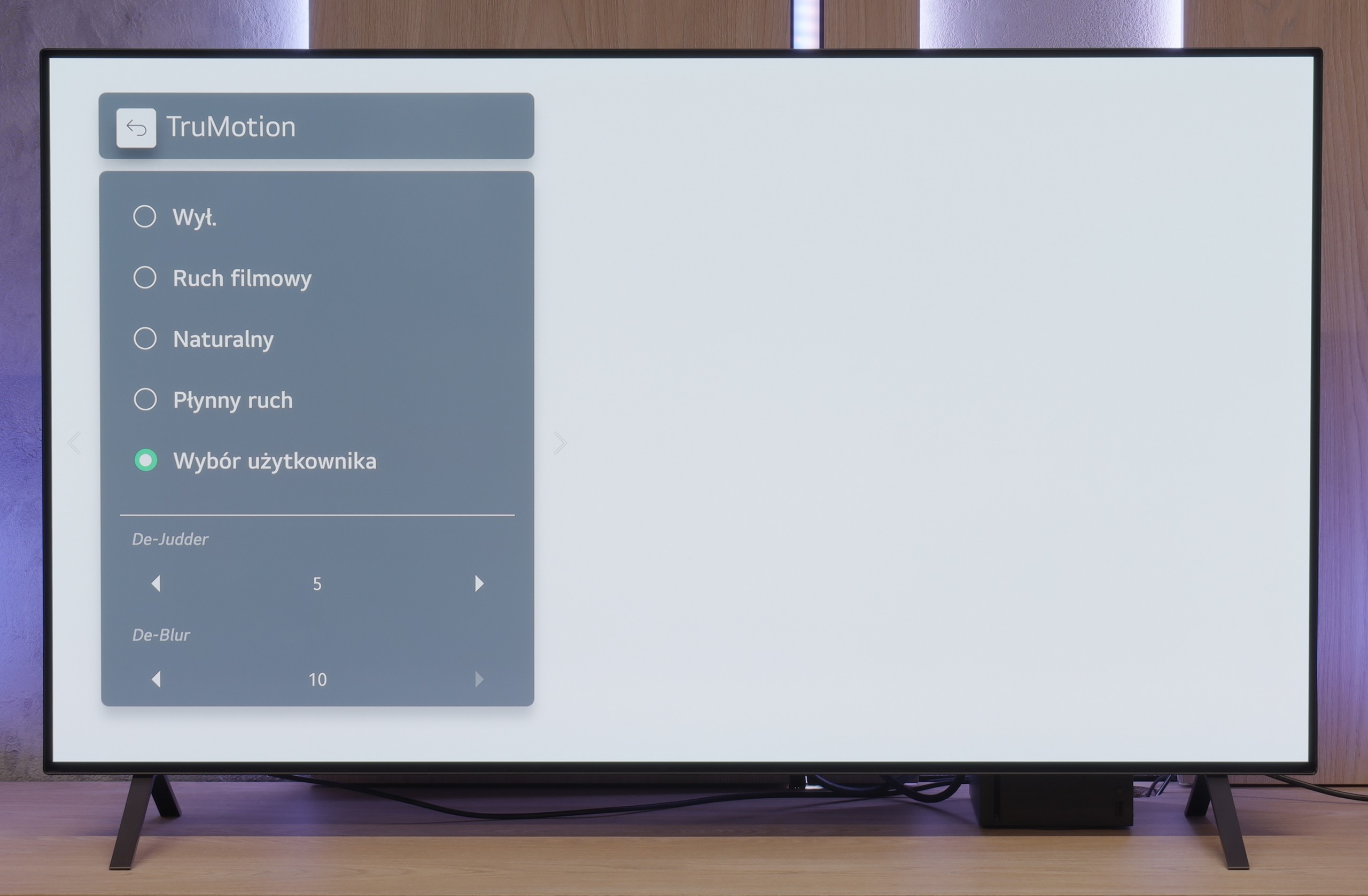
Blur (native resolution, maximum refresh rate):
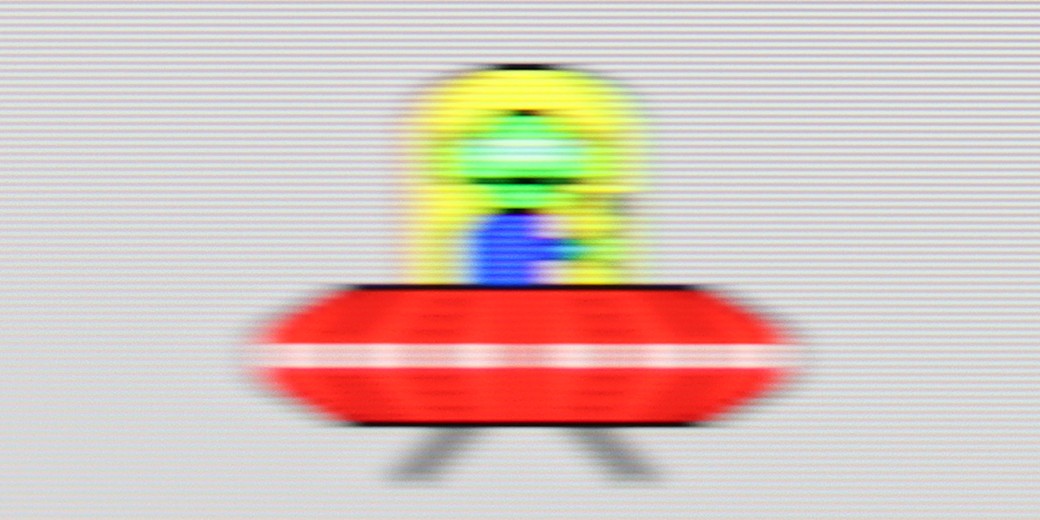



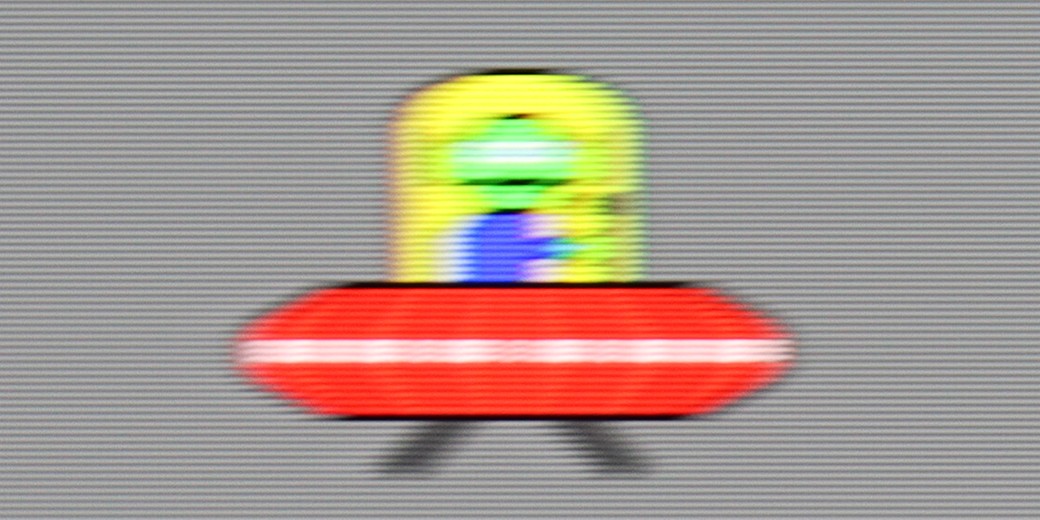

S90F really handles motion excellently – after all, it’s an OLED with a 144 Hz panel, so sports and games look absolutely stunning on it. The image is smooth, clear, and there’s no room for ghosting or blurring, which can sometimes plague cheaper LCDs.
The TV also comes equipped with motion smoothness settings that allow you to customise everything to your liking. We have motion blur reduction and judder reduction – you can set it so that the image is super smooth (even to the point of looking a bit soap opera-like), or more cinematic, with the classic “jumpiness” of 24 frames. The choice is yours, Samsung imposes nothing.
LG B5 is a TV with a 120 Hz OLED panel. It may not sound as impressive as the marketing terms "144 Hz" or "165 Hz" commonly found in gaming monitors, but honestly? The smoothness is still excellent. The picture is sharp, fluid, and simply enjoyable to watch – even when there’s a lot happening on screen. The organic panel does its job – the pixel response time is almost instantaneous, which means there’s no risk of ghosting or blurring that can ruin dynamic shots. Sports, fast-paced games – everything looks clear and distinct.
We also have the classic LG motion smoother, TruMotion. It allows you to smooth out movies shot at 24 frames – in other words, most of what you watch on Netflix or from Blu-ray discs. If you set lower values on the “De-Judder” slider, you’ll get a picture closer to the cinematic experience – with a slight judder, but without artificiality. Higher settings? Soap opera effect guaranteed. Fortunately, LG gives you the choice, and you can tune everything to your liking.
Console compatibility and gaming features
9.5/10
10/10
- ALLM
- VRR
- VRR range48 - 144Hz40 - 120Hz
- Dolby Vision Game Mode
- Correct implementation of HGIG
- 1080p@120Hz
- 1440p@120Hz
- 4K@120Hz
- Game bar
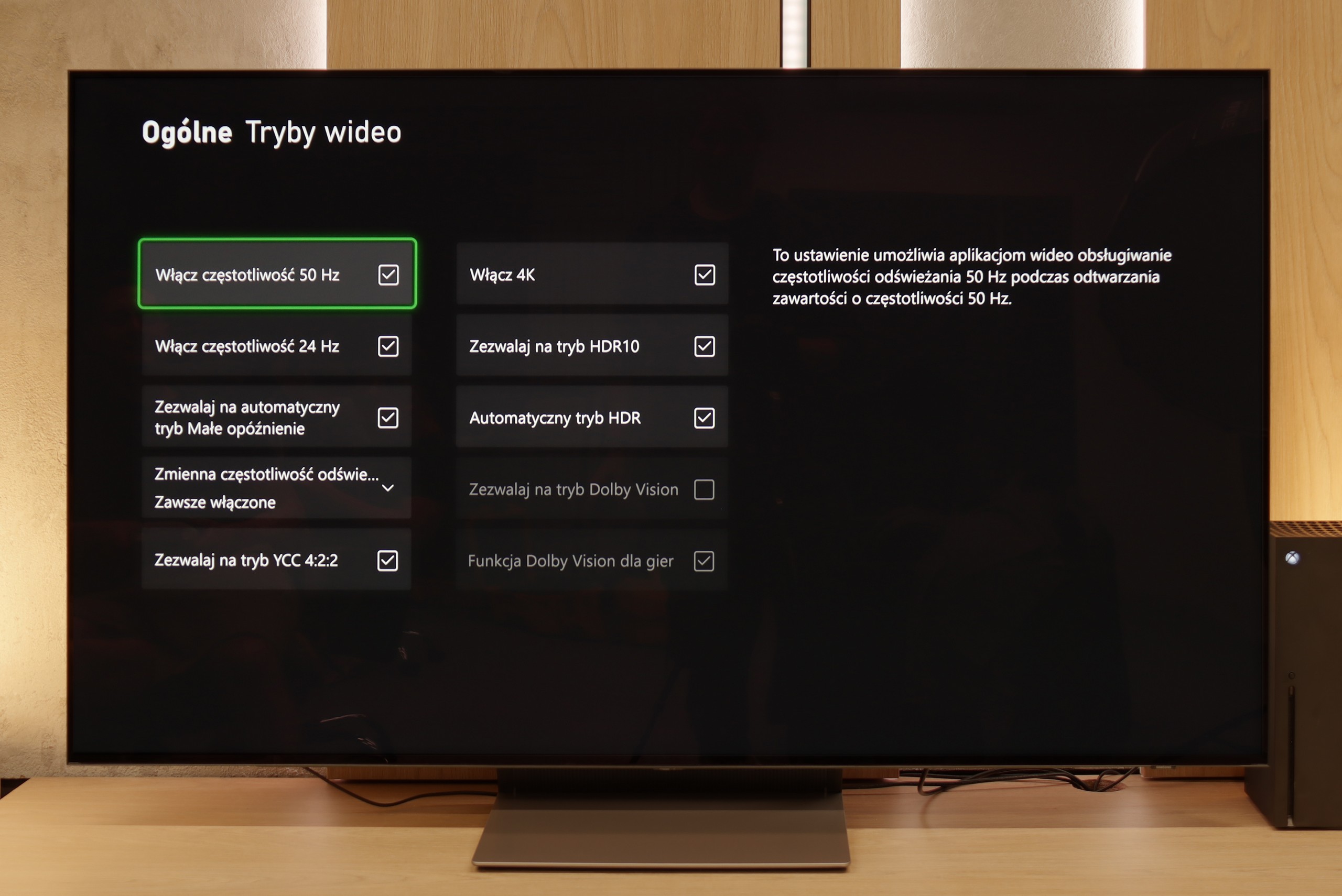
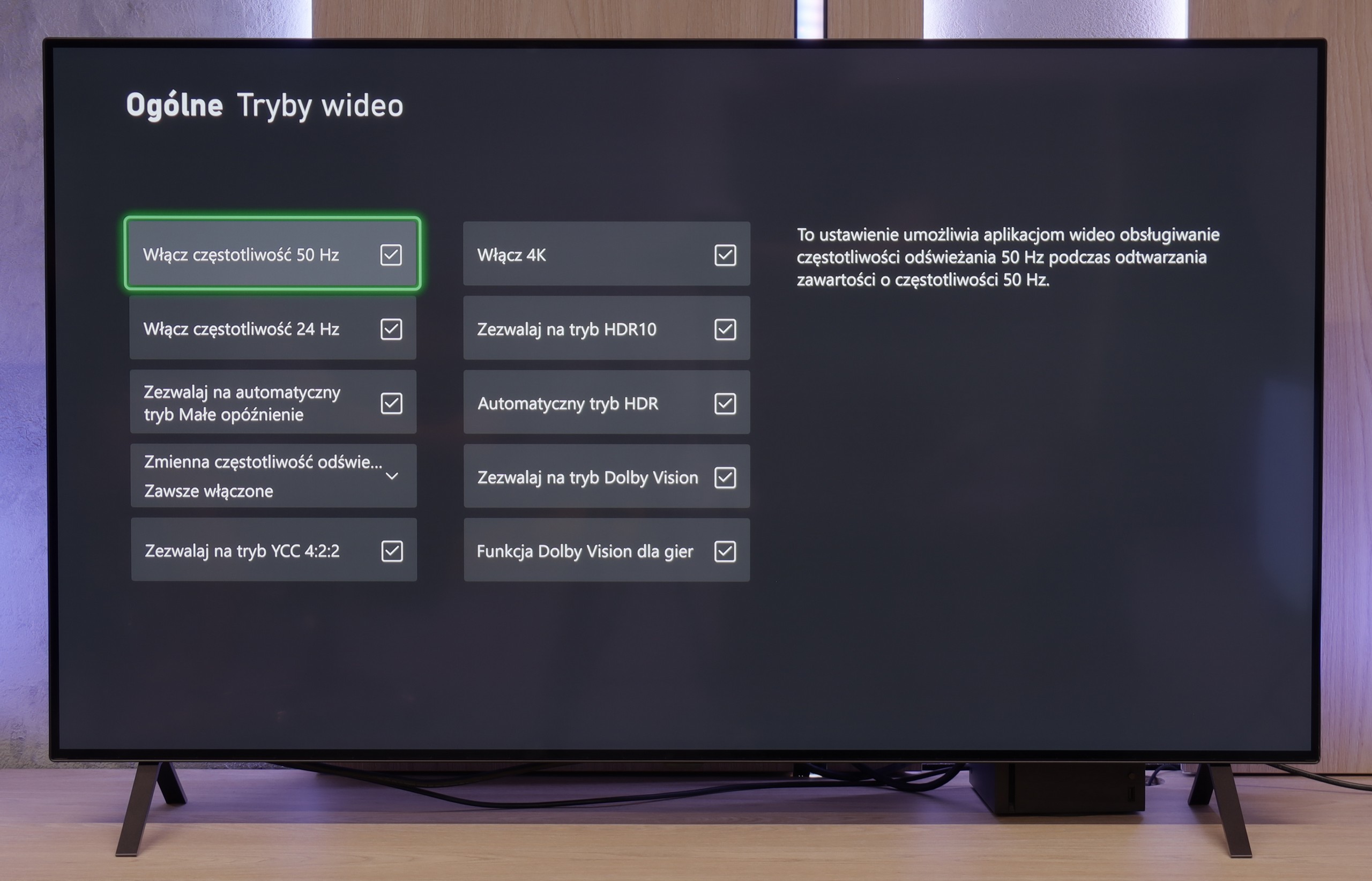
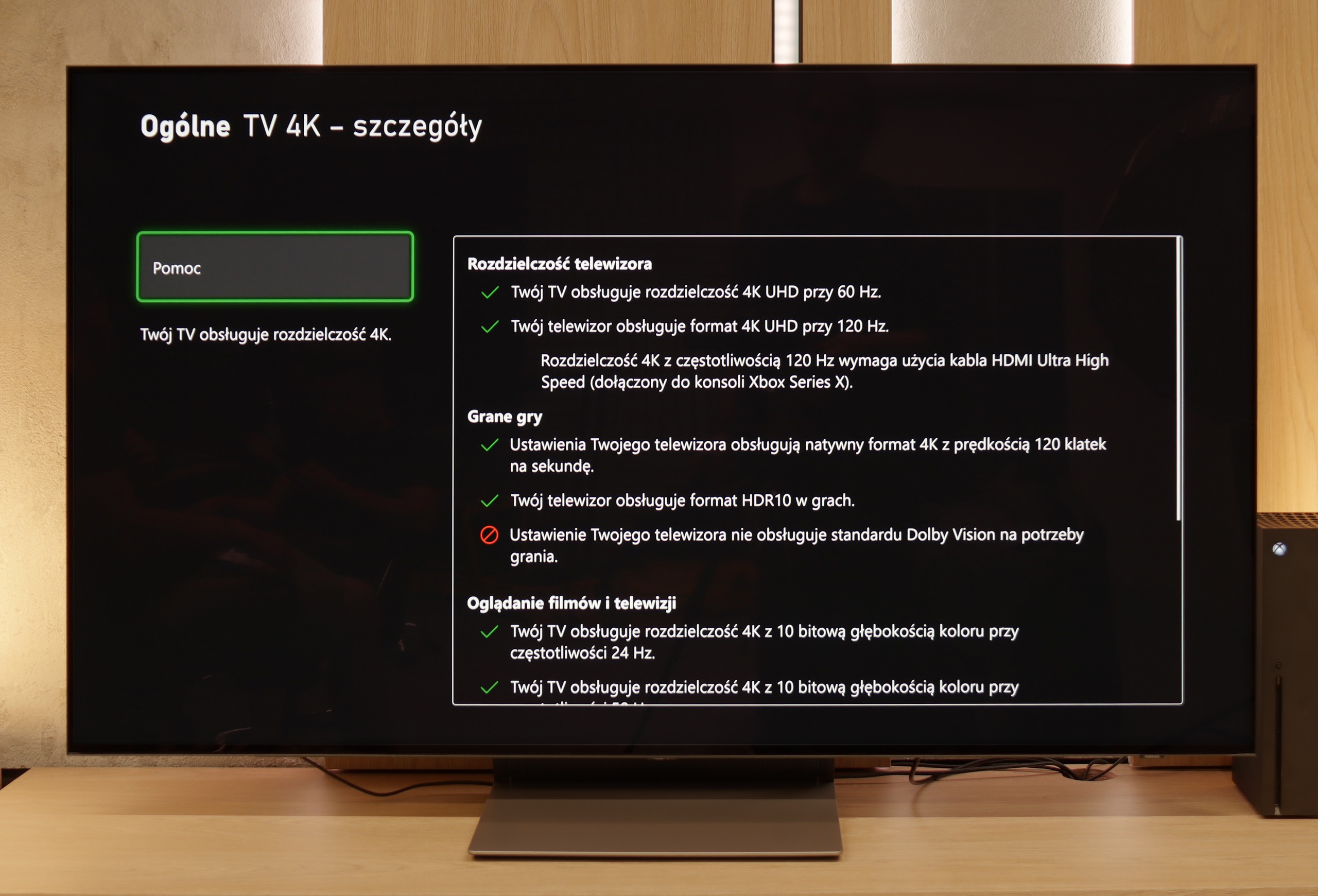
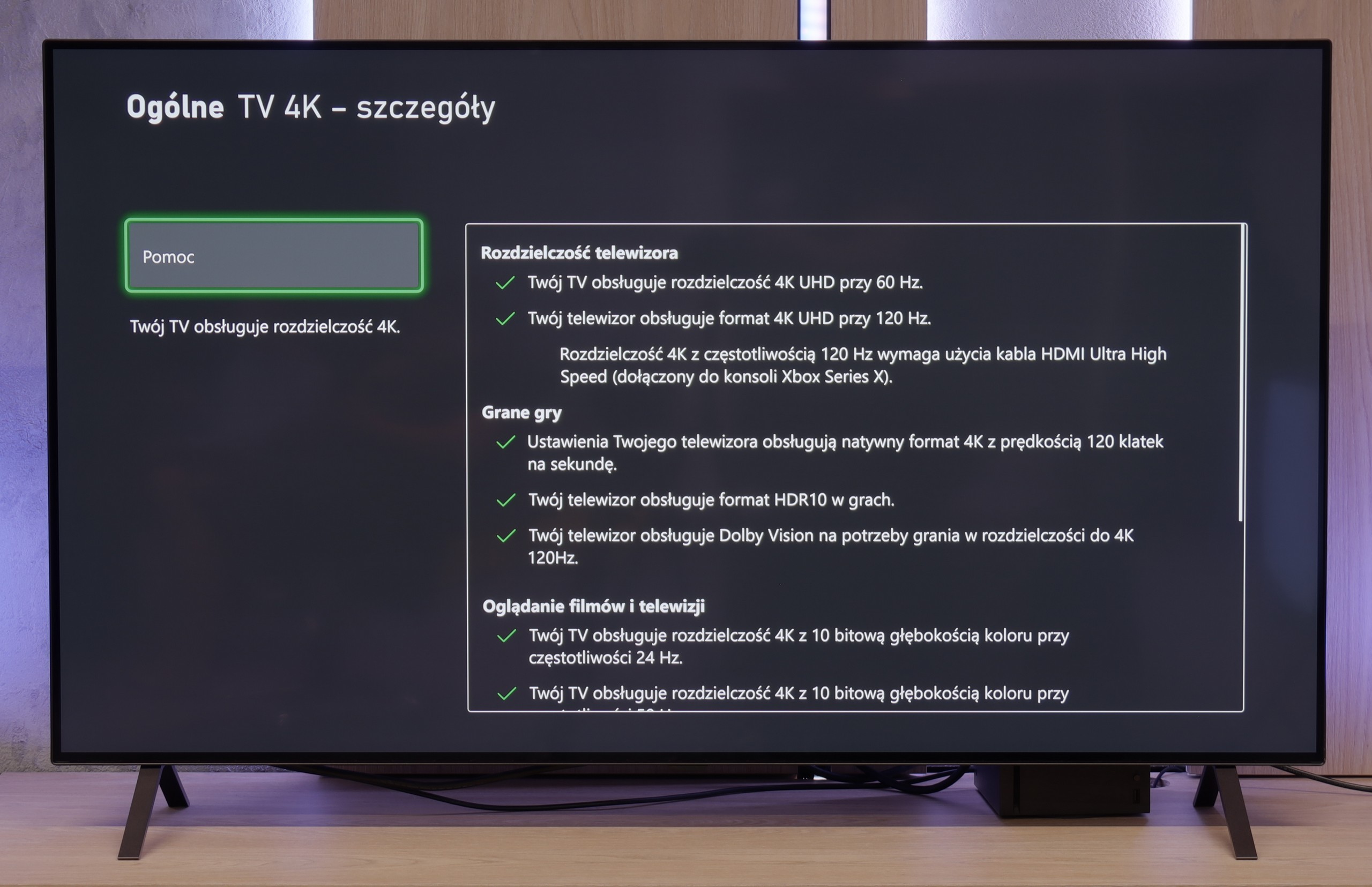
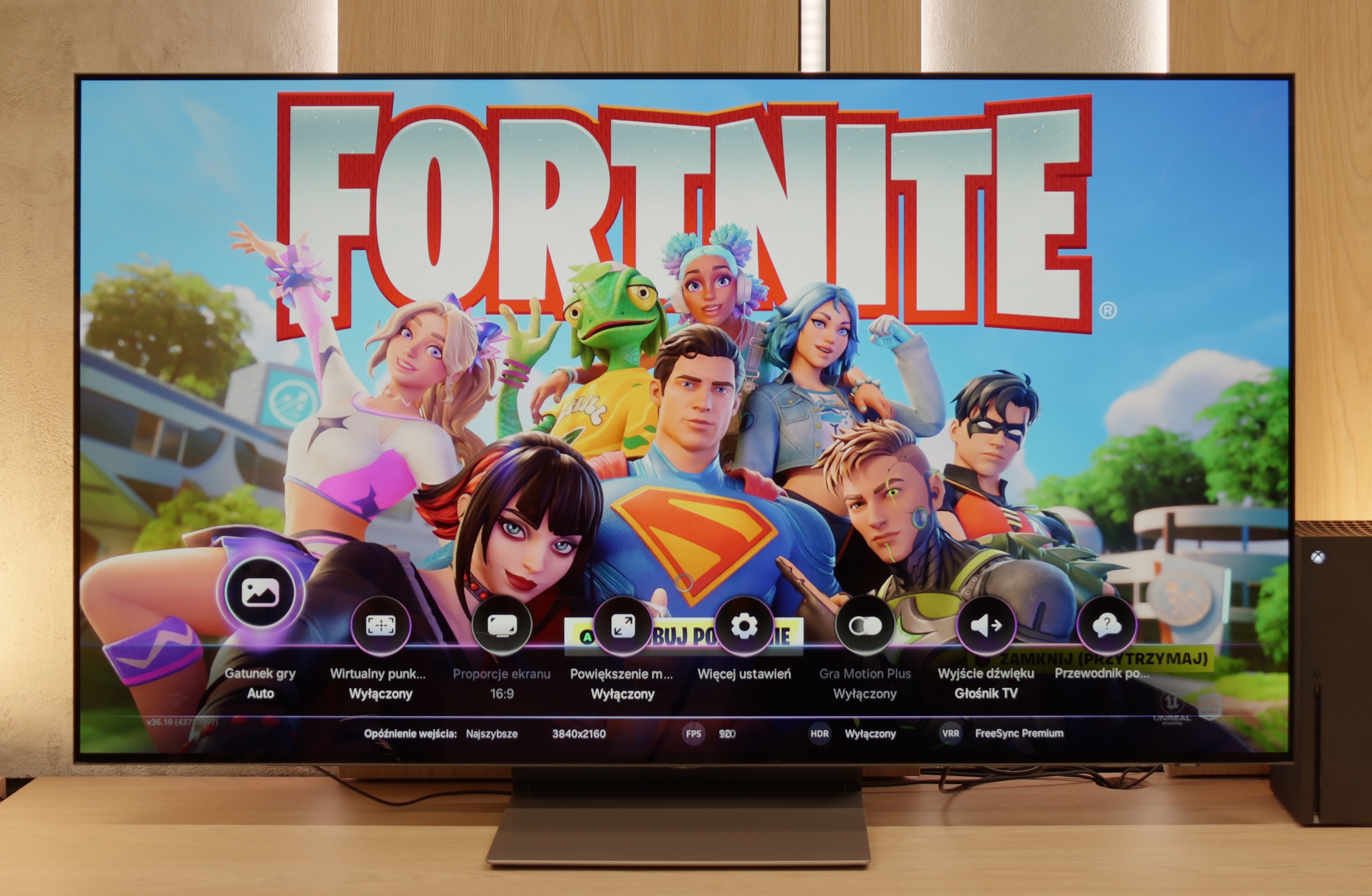
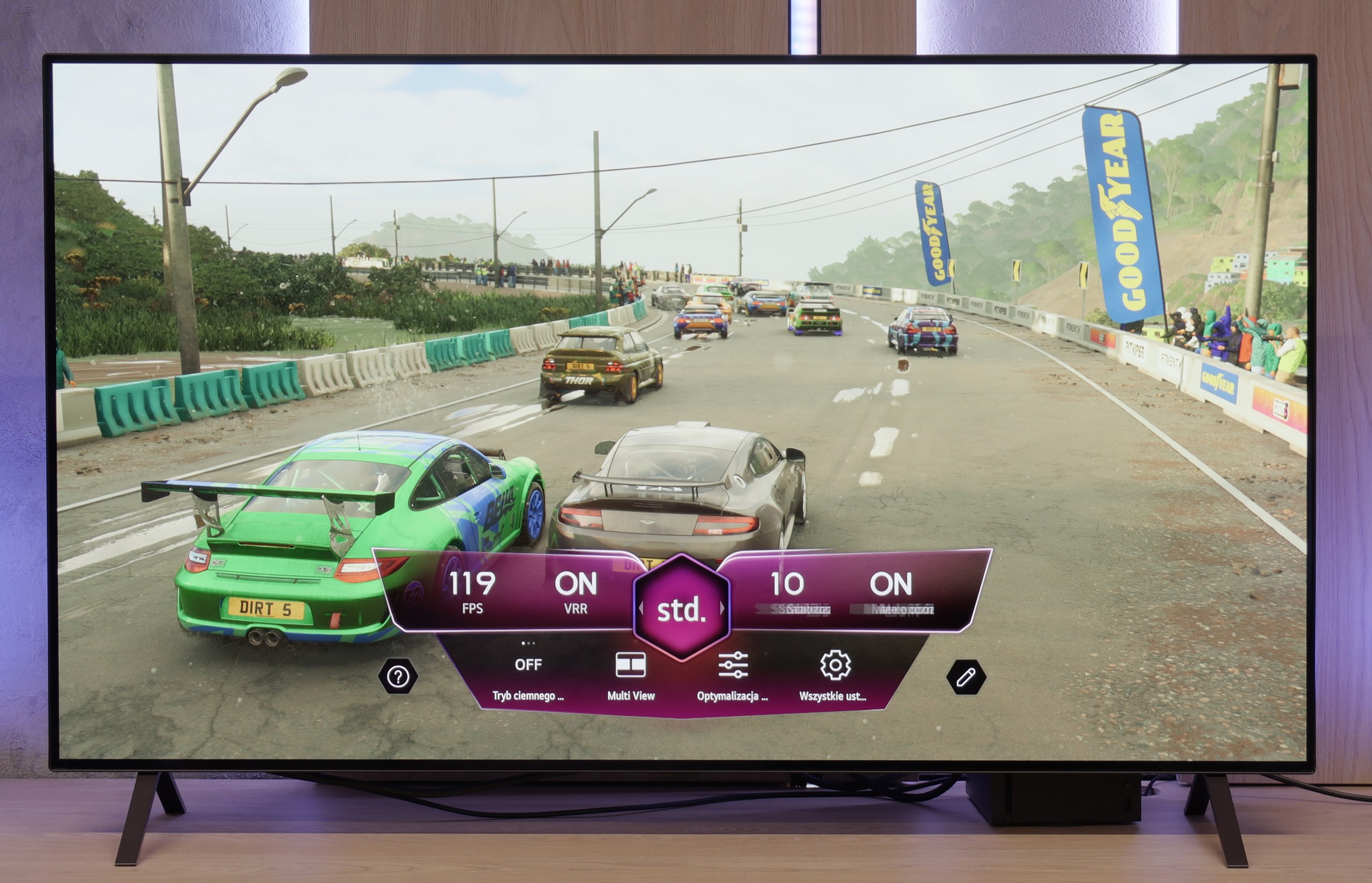

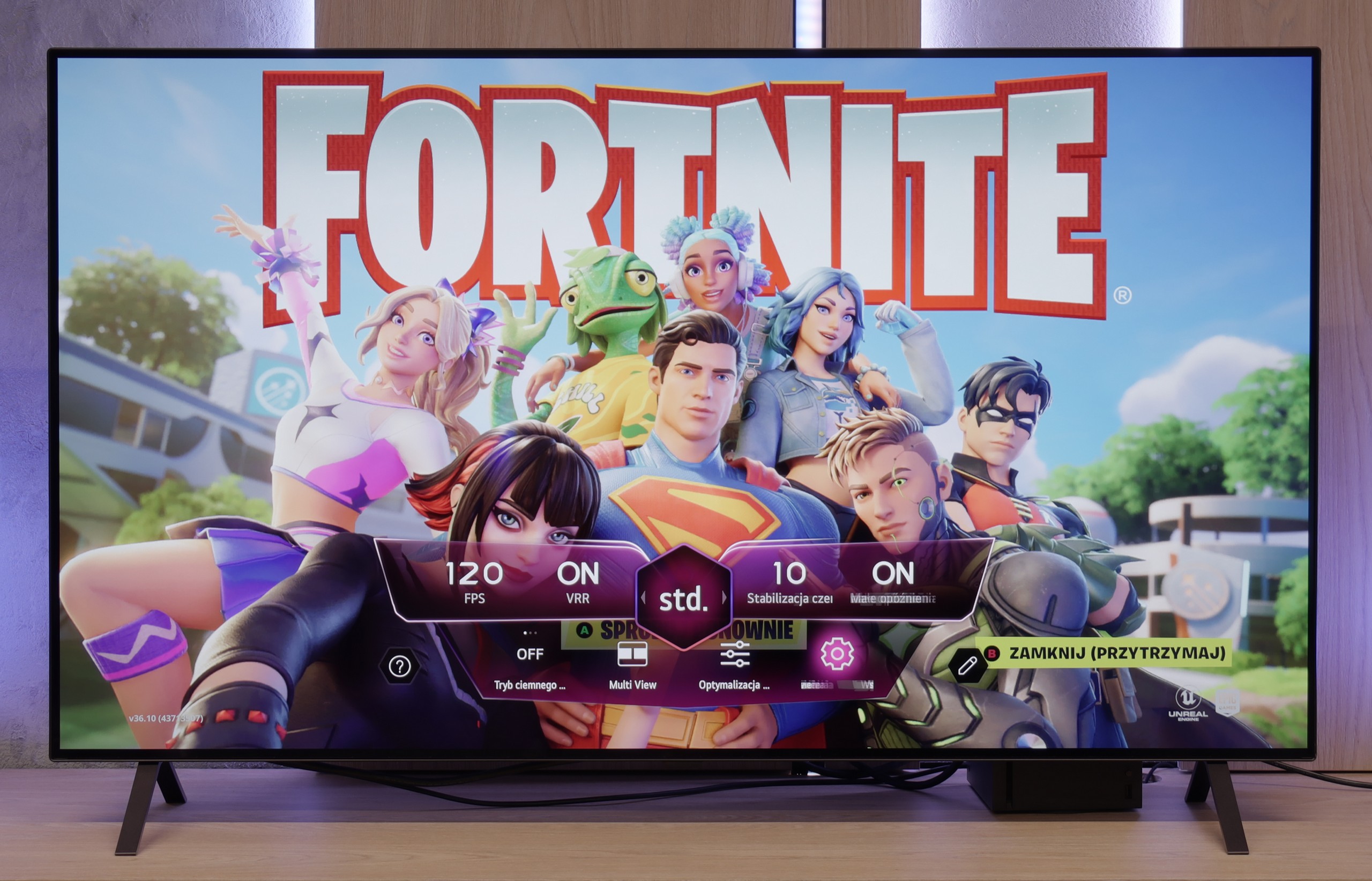
When it comes to gaming features – the S90F has absolutely nothing to complain about. Aside from the lack of Dolby Vision, which is already the norm for Samsung. The television operates at 144 Hz, has four HDMI 2.1 ports, so you can easily connect more than one console or PC. Onboard, we also find Game Bar – a practical tool that allows you to quickly preview picture settings, VRR status, ALLM mode, and other useful options. Game Motion Plus deserves special mention – Samsung's proprietary motion smoother that actually works sensibly in games. The image appears smoother, but without any artificial effects or slowdowns.
It's also worth mentioning the HGiG feature, which – and this may be a slight surprise – works correctly. We bring this up because Samsung clearly messed something up in one of the recent updates, and in some models, the option responsible for HGiG simply... disappears from the menu. Setting it up becomes almost impossible. Fortunately, our S90F unit did not have this issue, but the situation is dynamic, so it's worth keeping this in mind and regularly checking for new software versions and information from the manufacturer.
There are already a few TVs on the market with the "for gamers" label that don't really understand what that means. The LG B5 is not one of them. Everything here is spot on – there are four HDMI 2.1 ports, 120 Hz, there’s VRR and ALLM, and there’s also a Game Bar that's actually useful, not just looking good in the brochure. You plug in a console – it works. You set it to 4K at 120 Hz – it works. You have an Xbox and want to play in Dolby Vision – it works too. And it's not just "theoretically supports," it actually turns on, looks good, and you don't have to fiddle with settings for half an hour. Plus, there’s the HGiG picture mode, which LG has implemented correctly – meaning HDR in games doesn't turn the screen into a strobe light, but shows exactly what it should. There are no surprises, no strange limitations, no "buts." And you know what? That's how it should be. Cheers to the LG B5!
Input lag
10/10
9.9/10
SDR
HDR
Dolby Vision
Input lag in the S90F is at a level that's practically monitor-like. Under the best conditions, it achieved a score of 5 ms, which is an absolutely stunning result – even a benchmark for the most demanding gamers. Whether you're playing fast-paced shooters, fighting games, or simply need instant response – the S90F does not disappoint in this regard at all.
Here we won’t be going on about it – the LG B5 simply has great input lag. For 60 Hz content, it achieves results below 10 ms, and for 120 Hz it even drops to around 5 ms. These are values that can’t be reasonably criticized. It just works instantly, without delays, without surprises. Well... almost. Because as usual, there’s a slight asterisk with the Dolby Vision Gaming mode. In this mode, the response time slightly increases. It's nothing dramatic – they’re still very low values, likely unnoticeable while gaming – but if you’re only playing tournament titles and fighting for every millisecond on your XBOX, it’s worth keeping in mind.
Compatibility with PC
8.6/10
7.6/10
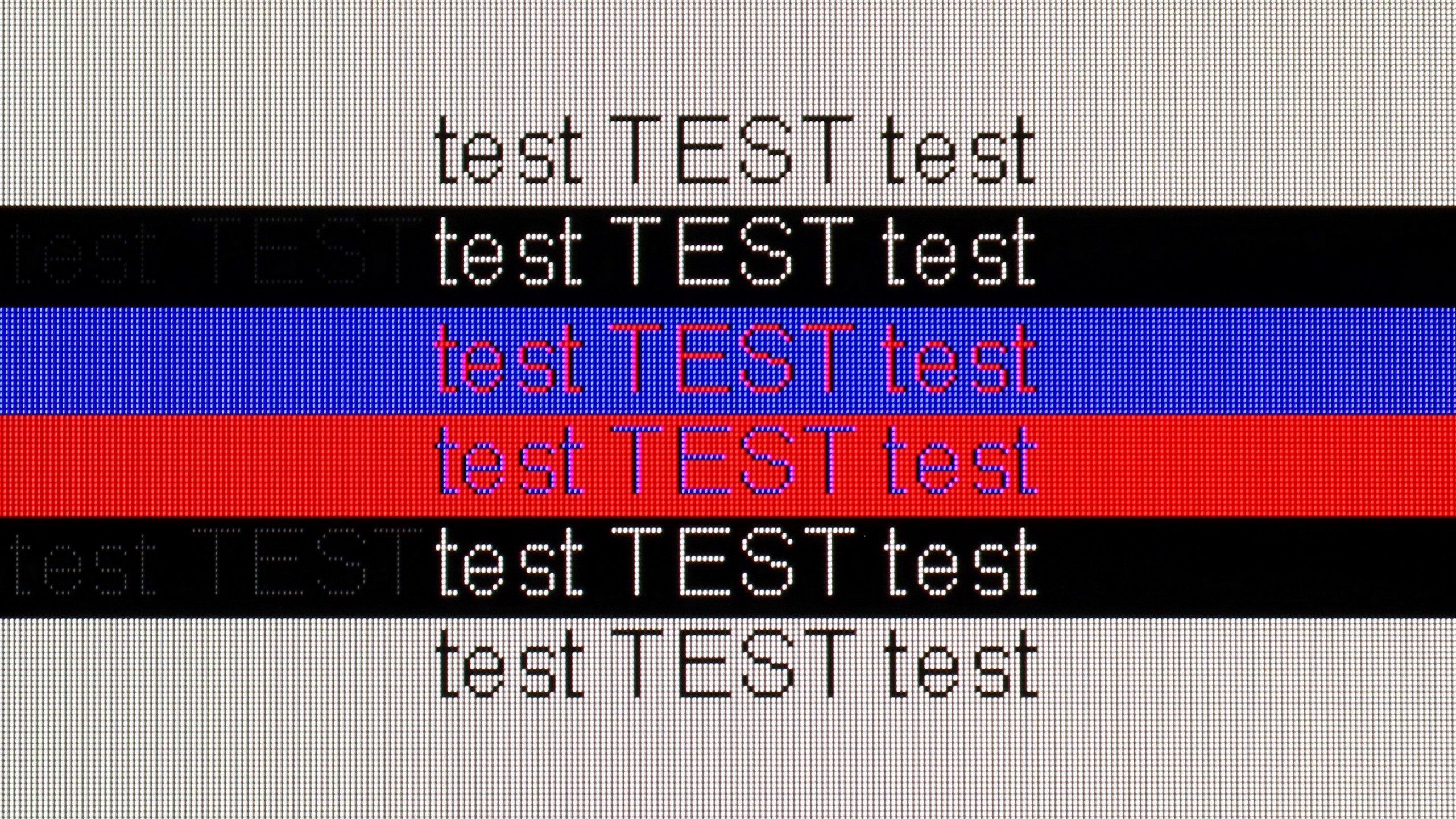
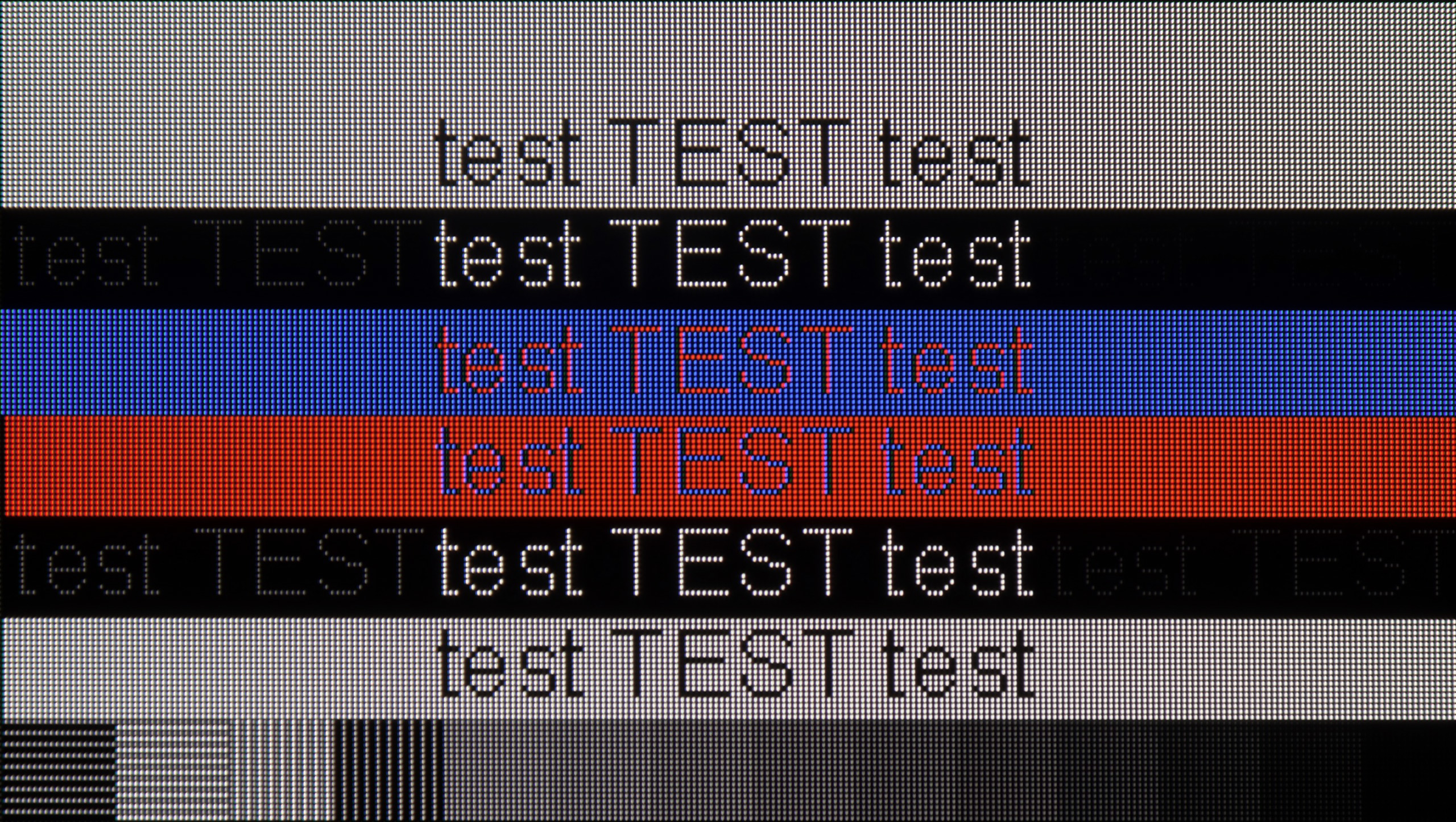
S90F is a great tool for both gaming on PC and daily work. Gamers can rest easy – the TV effortlessly supports image synchronisation with NVIDIA graphics cards thanks to G-Sync, and the 144 Hz refresh rate combined with very low input lag only confirms this. S90F also excels as a monitor for working with text. Of course, the readability of fonts may be slightly compromised by the characteristic pixel structure in the RWGB arrangement, but this is a topic well known primarily to those who work with a lot of text, code, or Excel spreadsheets. For most users, this will be perfectly acceptable.
LG B5 is a television that communicates well with a computer. You won't find gaming features like 144 or 165 Hz here, but is that really necessary for anyone? Thanks to the 120 Hz panel, low input lag, and G-Sync support, it's actually a very good screen for gaming on PC. No stuttering, no tearing, with instant response.
But it's not just for gaming. The B5 can also be quite comfortable for... simply working. The television correctly supports chroma 4:4:4, so fonts are legible, interfaces are clear, and your eyes won't hurt from blurry text. This isn't obvious, even among more expensive models. However, there is one "but" – and this applies not only to the B5, but to every OLED with a WOLED panel. The RWGB subpixel arrangement can cause a slight shadow at the edges of fonts. This isn't something that stands out from the couch. It's more likely to be noticed by someone sitting close to the screen and spending half a day in Excel.
Viewing angles
7.4/10
7.4/10
The viewing angles on the S90F are very good, although it must be honestly admitted that they are slightly inferior to the 65" version with the QD-OLED panel. Nevertheless, the picture quality at wide angles performs very well – colours remain vivid, and brightness doesn’t drop dramatically when viewed from the side. There's no need to move the TV closer to see a clear image. For most users, this level is more than sufficient.
In terms of viewing angles, the LG B5 performs very well – exactly as you would expect from a WOLED panel. No matter from which side you sit, the picture retains its quality. Colours don't fade, contrast doesn't drop off sharply, and details remain clearly visible. However, it must be honestly added that this is not the level of QD-OLEDs from Samsung Display. Those manage to hold colour saturation even better under extreme angles. But if you don't plan on watching films while sitting at a 90-degree angle – the B5 is more than sufficient. It's one of those TVs that is just pleasing to look at – from any side.
TV efficiency during daytime
6.1/10
4.9/10
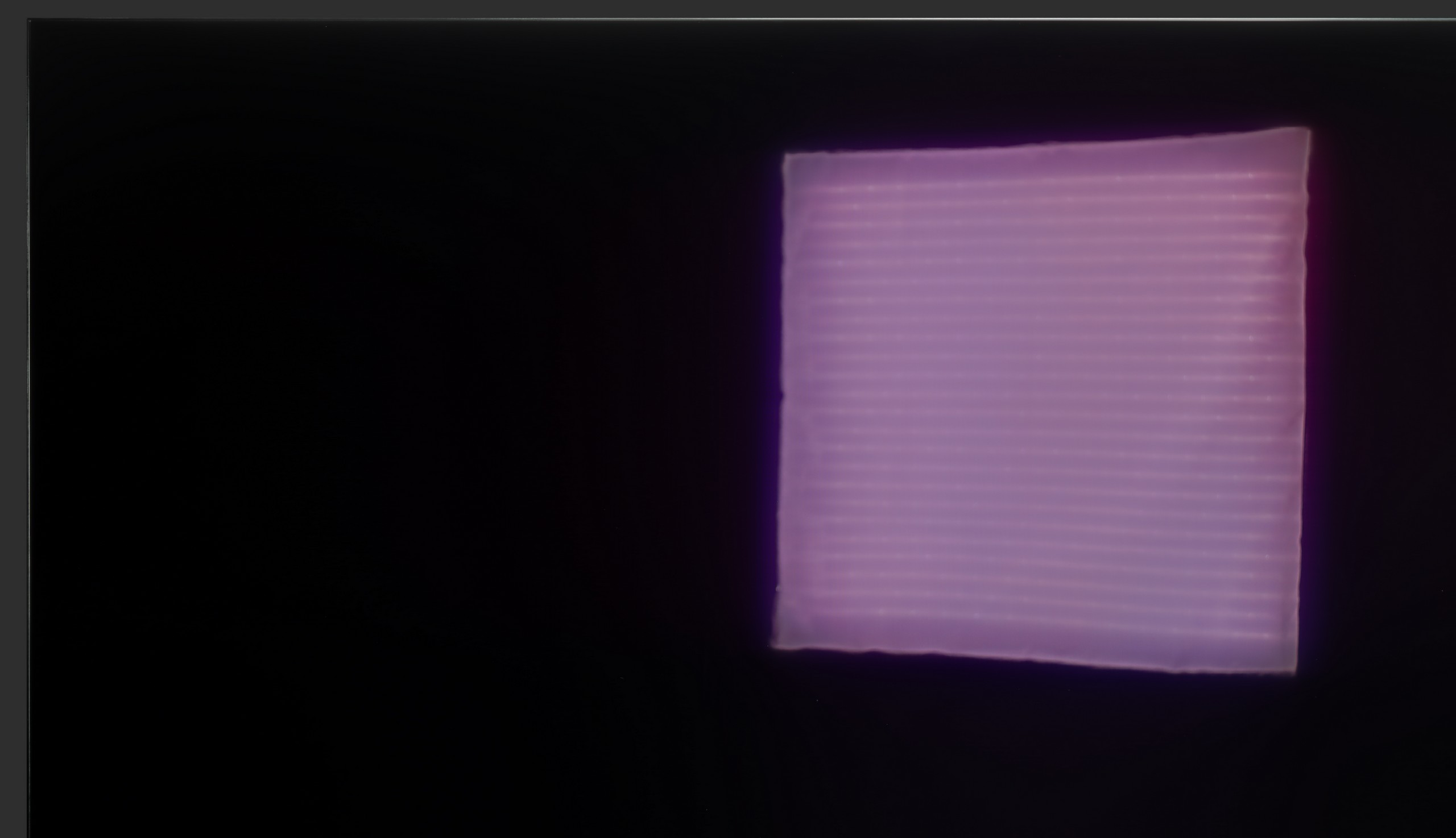
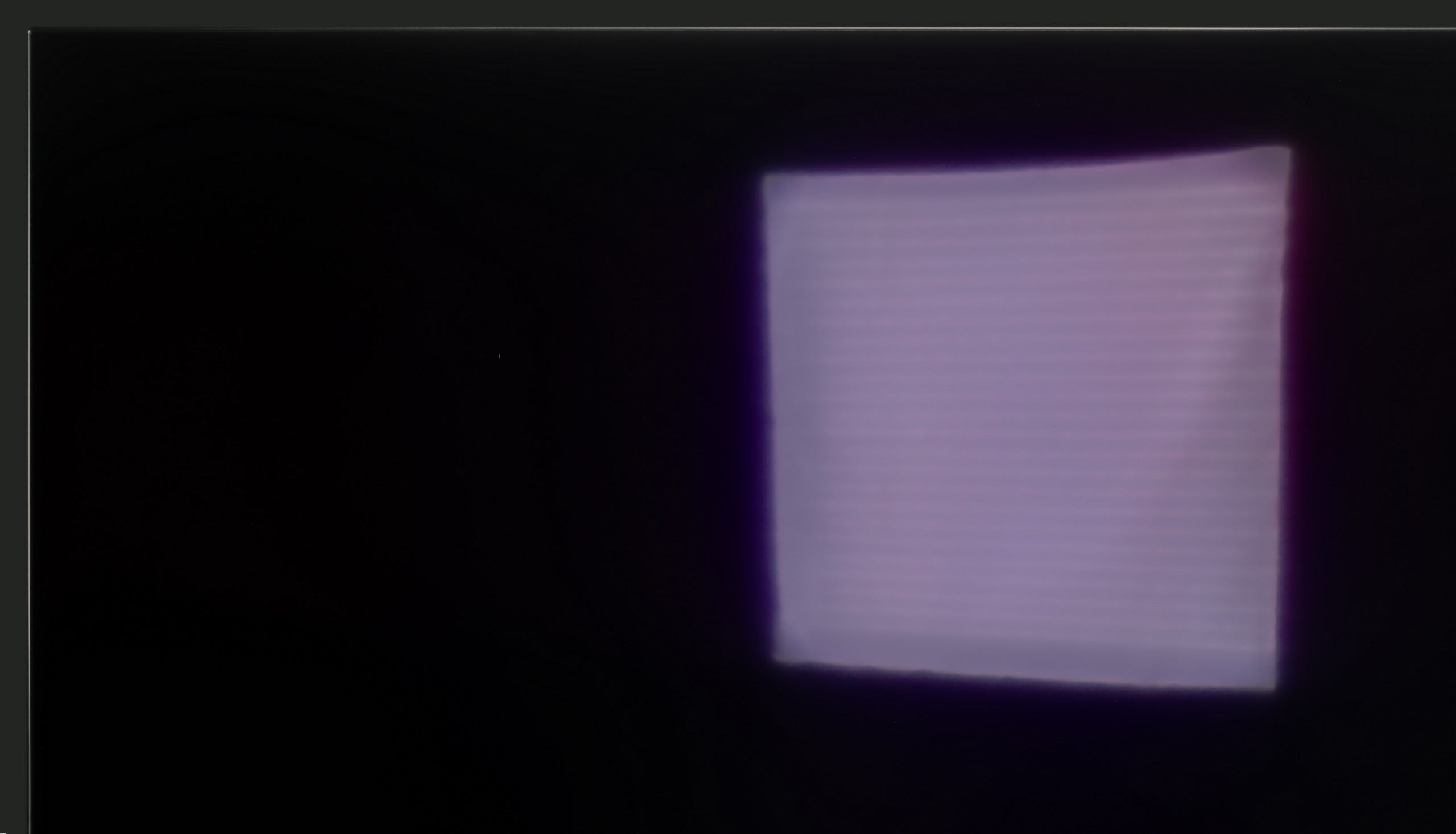
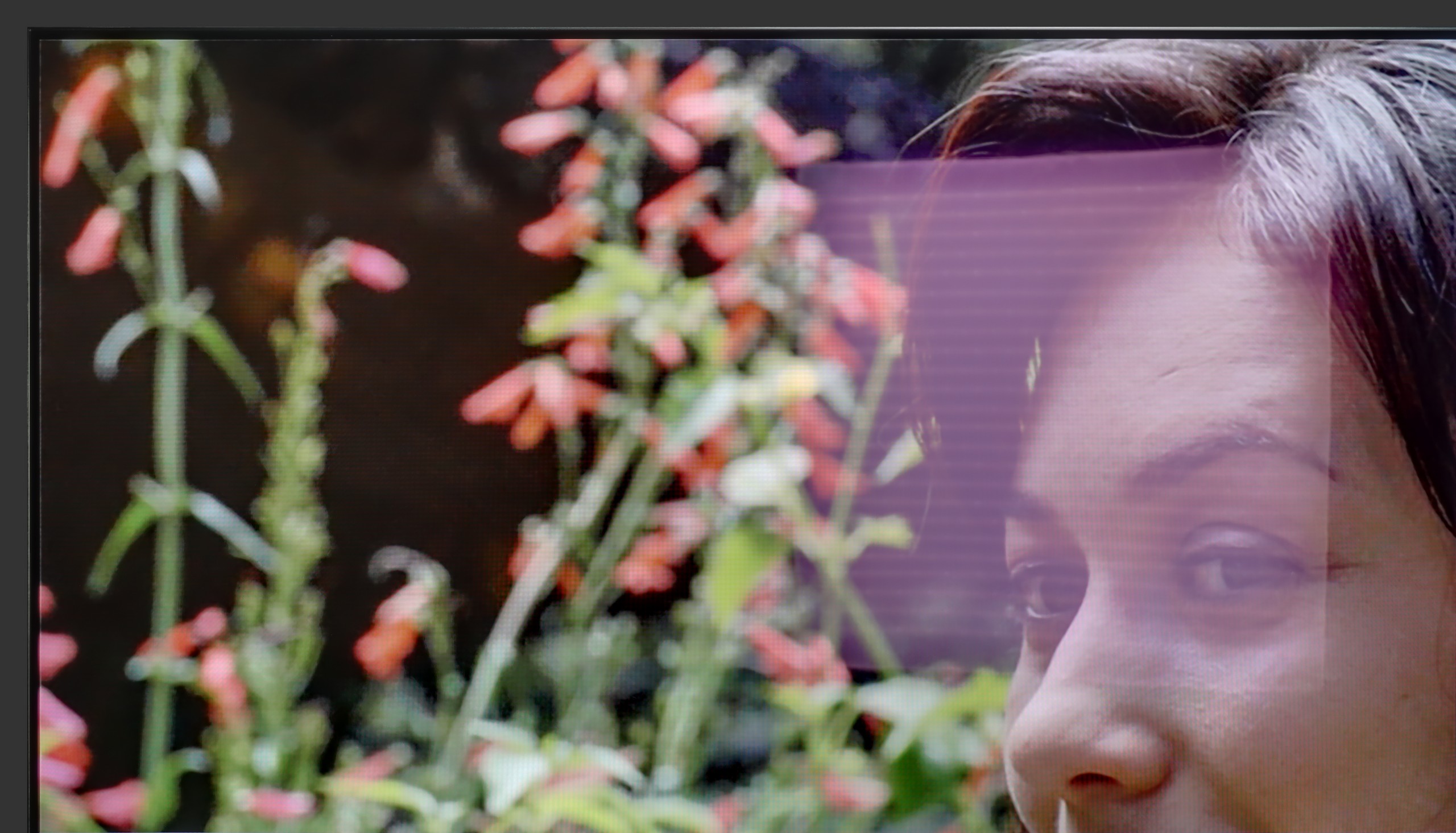

Matrix brightness
Average luminance SDR
LG OLED B5: 279 cd/m2
SAMSUNG S90F (WOLED): 405 cd/m2
S90F is really bright for an OLED TV. Of course, it shouldn’t be compared to Mini-LED TVs or the brightest high-end OLEDs, but under normal lighting conditions, it’s easy to watch something during the day. The brightness is high enough that there’s no need to close the curtains every time a movie or series is turned on. However, it’s important to remember that the anti-reflective coating on WOLED panels is not the best. Reflections can be noticeable, especially with bright light coming in from the window. In such cases, it’s best to reach for curtains.
The LG B5 is a television that feels best after dark. But when the sun comes in, it becomes a bit of a challenge. The brightness of this model is rather average, and the anti-reflective layer… also average. There are no special coatings here that deal well with reflections or very bright daylight. So if you're planning to place this television opposite a large, uncovered window – it may simply be hard to see anything.
Fortunately, there is something worth praising: the glossy WOLED panel maintains good colour saturation. Even in difficult conditions, the image doesn't fade or become "washed out," as can happen with some television models. In general, it's watchable, but if you're looking for a television specifically "for a bright lounge room," the B5 shouldn't be your first choice.
Details about the matrix
Subpixel Structure:
Panel uniformity:
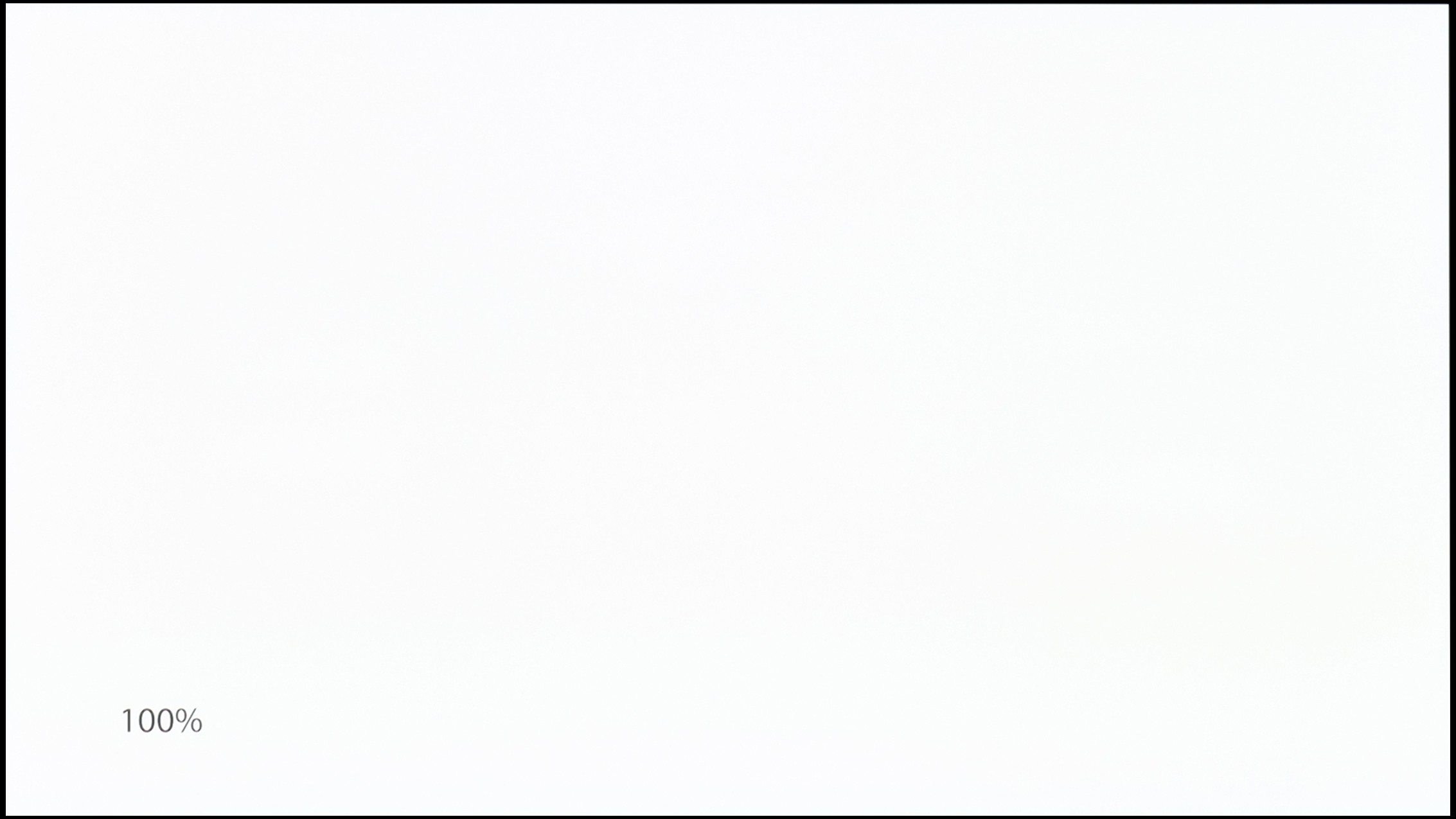
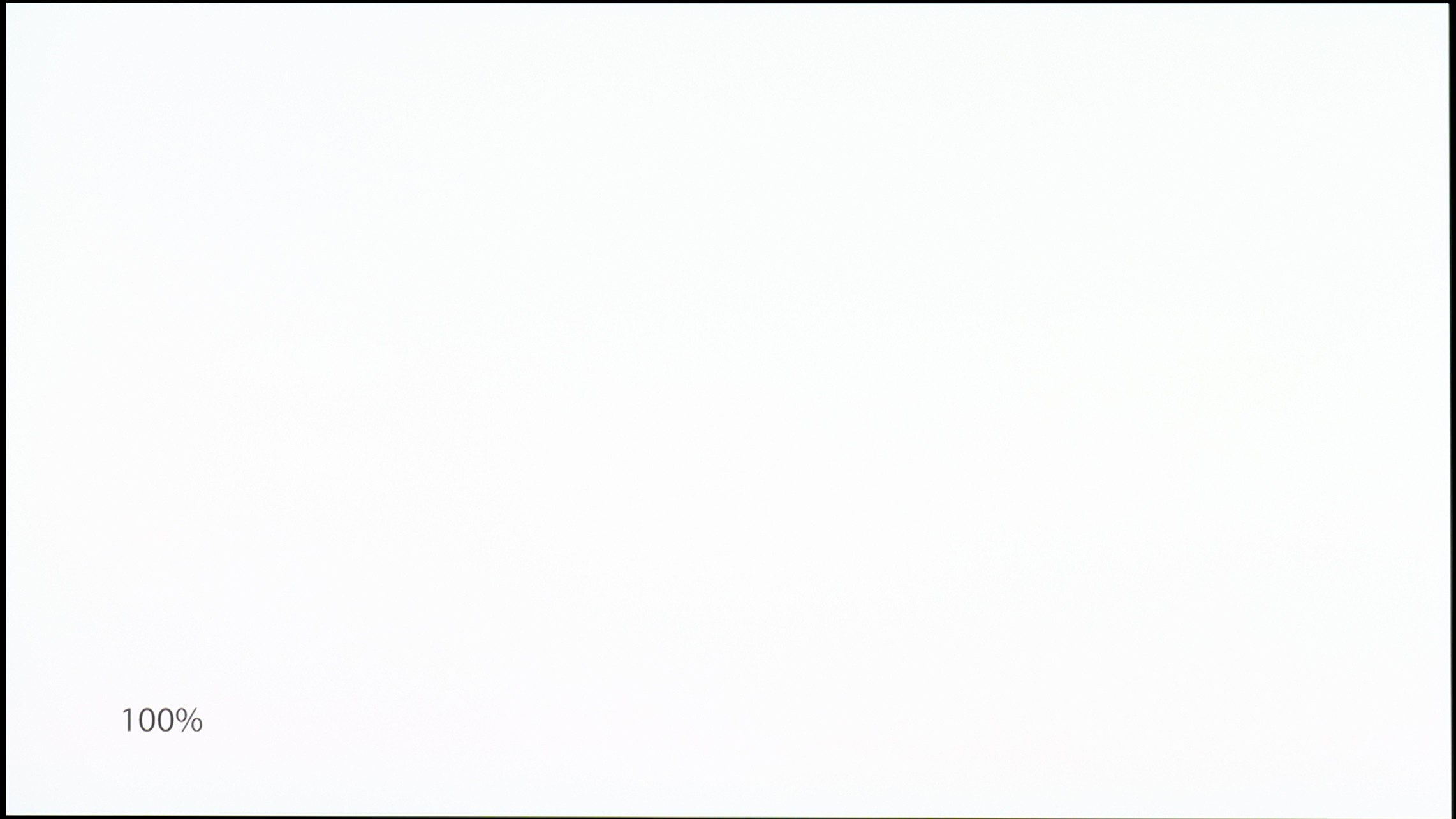
TV features
7.5/10
8.3/10
- HDMI inputs0 x HDMI 2.0, 4 x HDMI 2.1 48Gbps0 x HDMI 2.0, 4 x HDMI 2.1 48Gbps
- Other inputsToslink (Optical audio), IR (remote)
- OutputsToslink (Optical audio), eARC (HDMI), ARC (HDMI)Toslink (Optical audio), eARC (HDMI), ARC (HDMI)
- Network InterfacesWi-Fi 2.4GHz, Wi-Fi 5GHz, Ethernet (LAN) 100MbpsWi-Fi 2.4GHz, Wi-Fi 5GHz, Ethernet (LAN) 100Mbps
- TV receptionDVB-T, DVB-T2, DVB-S, DVB-S2, DVB-CDVB-T, DVB-T2, DVB-S, DVB-S2, DVB-C
Classic features:
- Recording to USB (terrestrial TV)
- Recording programming
- Picture in Picture (PiP)
- RF remote control (no need to aim at the screen)
- Backlit remote control
- Teletext
- Audio only mode
- Possibility to connect Bluetooth headphones to the TV
- Possibility to simultaneously use Bluetooth headphones and the TV speaker
Smart features:
- AirPlay
- Screen mirroring (Windows Miracast)
- Wyszukiwanie głosowe
- Voice search in native language
- Ability to connect a keyboard and mouse


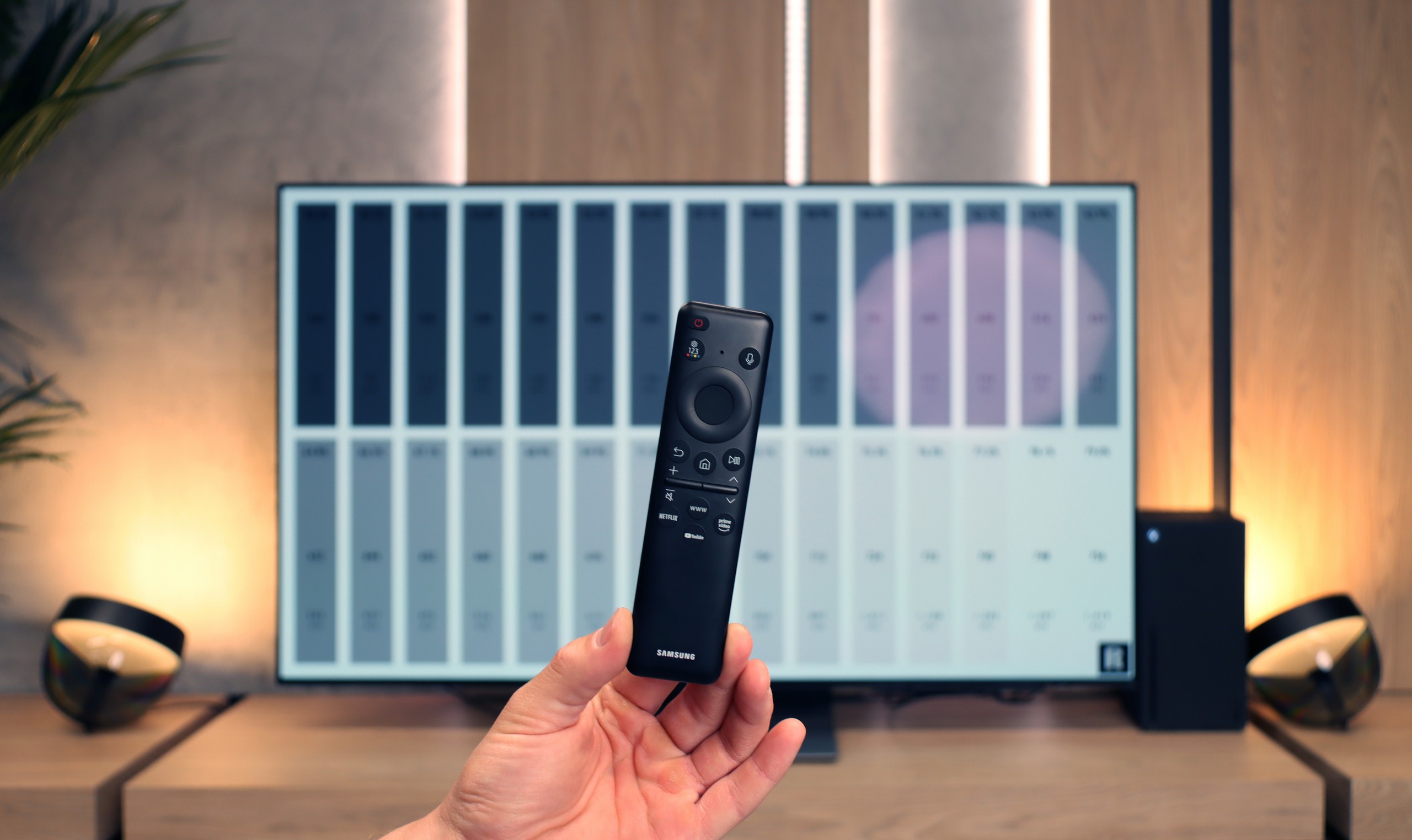
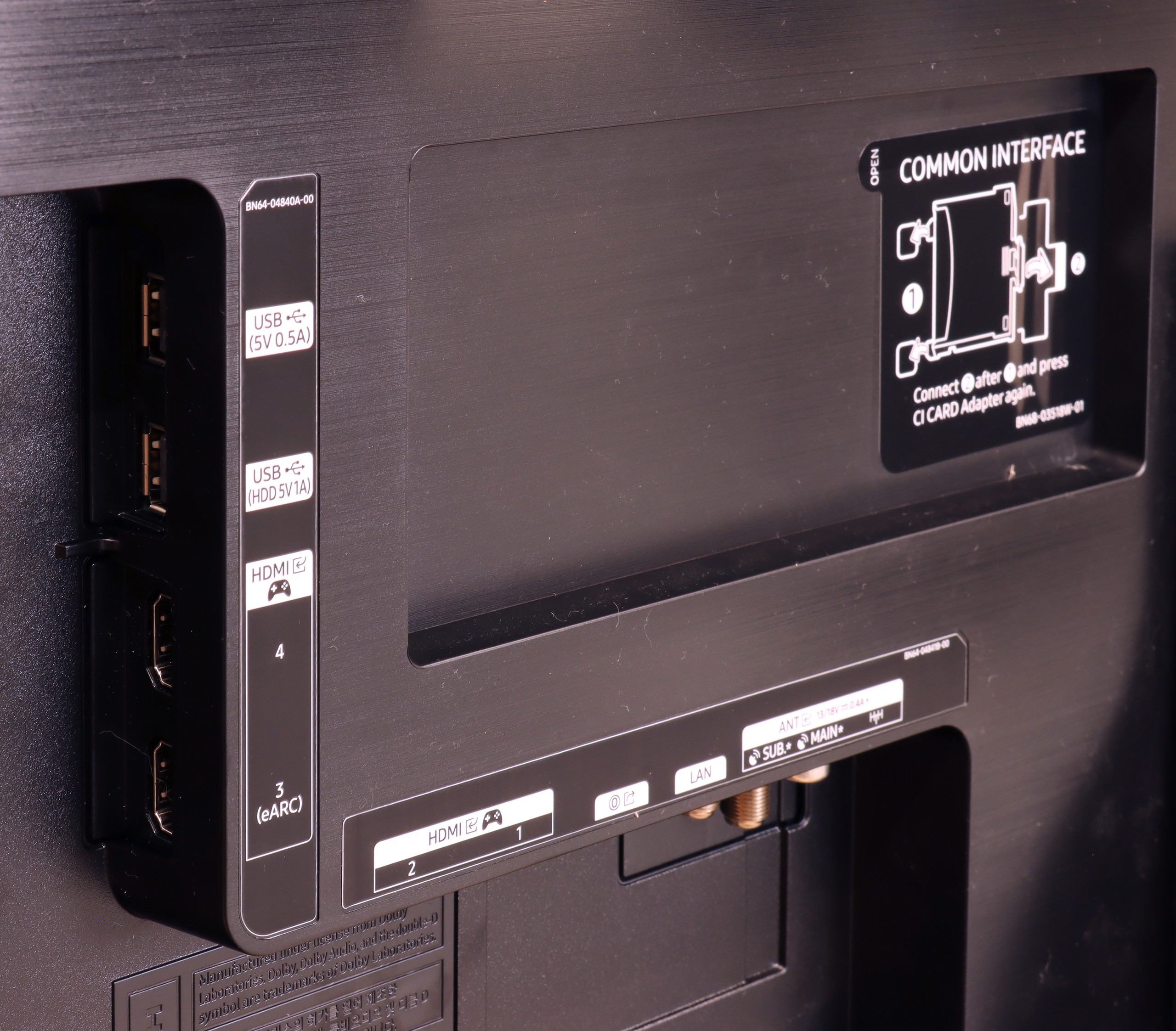
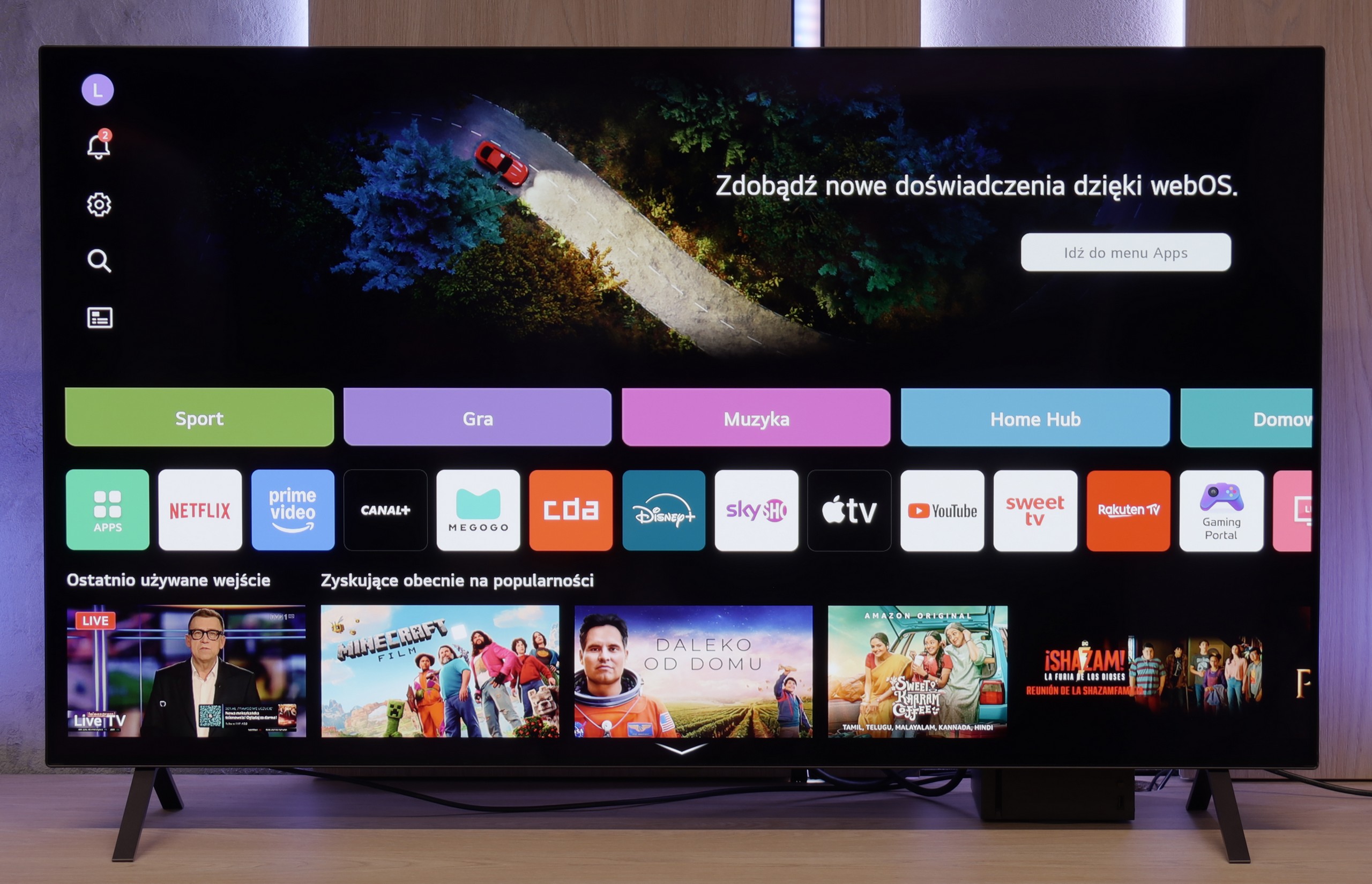
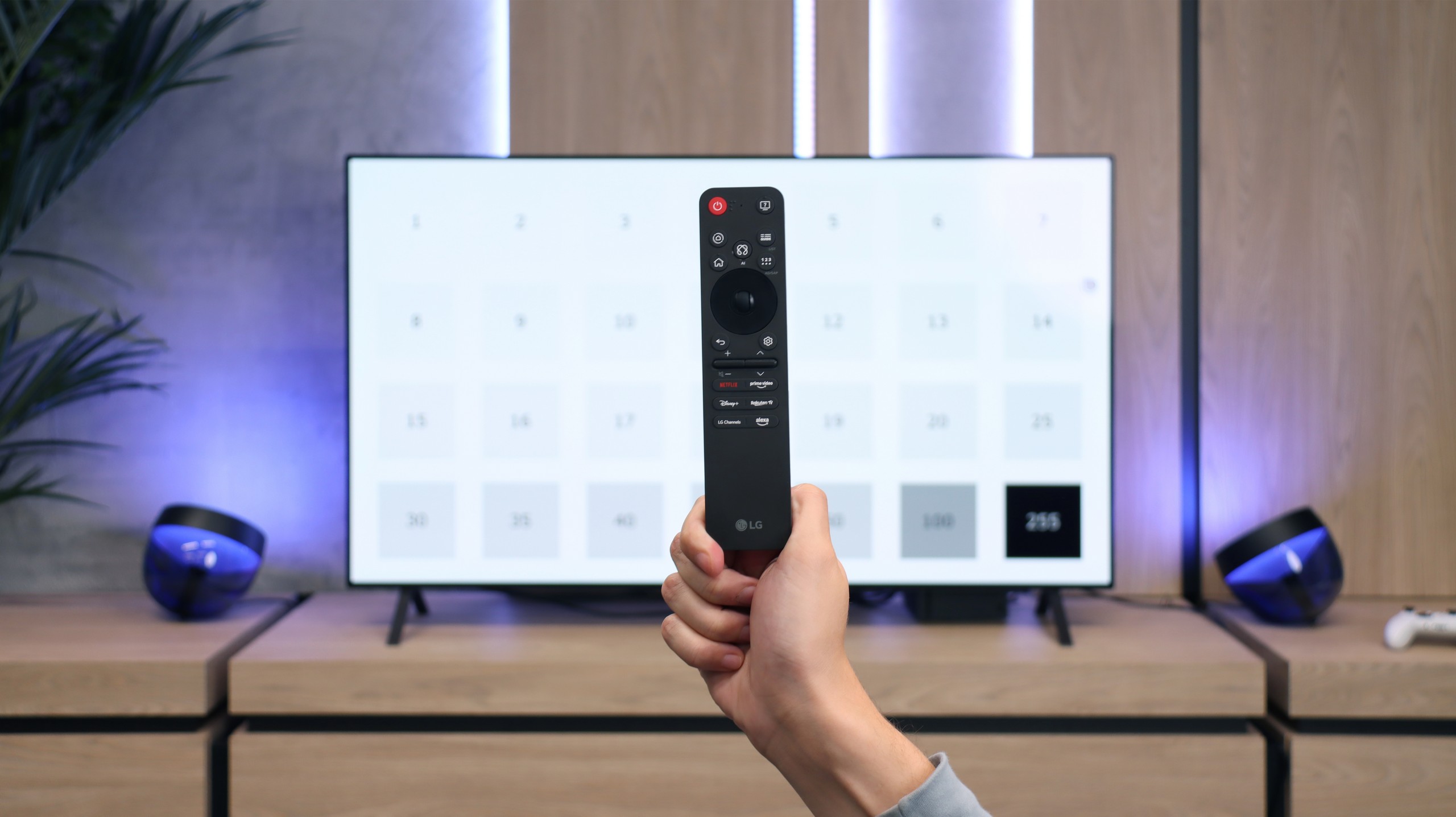
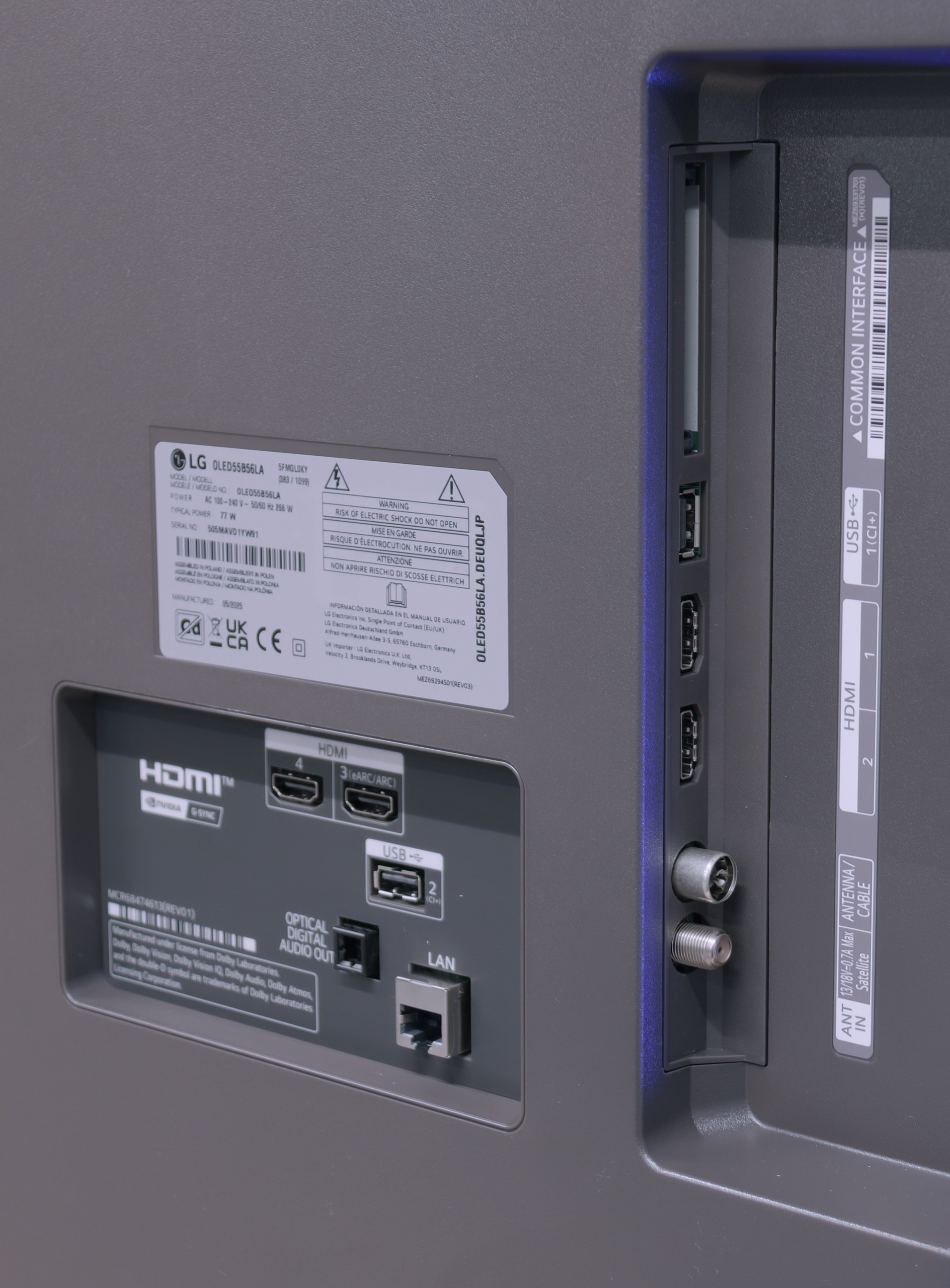
Samsung S90F is equipped with a range of classic TV features, such as EPG, CI module, and headphone support, but there’s also more to it. Thanks to the presence of several tuners, the TV offers a picture-in-picture (PiP) function – very useful, for example, when we are watching one match but want to check the score of another match happening simultaneously. It's a pity that Samsung has completely abandoned the USB recording feature for some time now, but this is partially compensated by good integration with decoders and other devices. The remote – while small and lacking a numeric keypad – allows you to control multiple devices connected to the TV. You can easily manage a decoder, amplifier, console, or other gear with it – all without needing to reach for several remotes.
As for the Smart TV system – Tizen on the S90F operates very smoothly, which is not a given in cheaper models with this system. The system itself is extensive and offers plenty of features – we have screen mirroring, AirPlay, Bluetooth device support, and quite a few options related to smart home functionality, such as controlling bulbs or other smart devices directly from the TV. However, it’s important to remember that Tizen is a closed system, so when it comes to apps – we are limited to what we find in the Samsung store. And while it is quite extensive, it doesn’t match the flexibility of the Google TV platform. It’s worth keeping this in mind if you have specific needs for niche applications.
Functional Features
Even though the LG B5 is modern equipment, it hasn’t forgotten those who simply want to... watch television. No apps, no accounts, no logging in anywhere. We have built-in DVB-T2 tuners and the ability to record onto USB, with a clear and fast EPG guide. Is that not enough? There’s even a working teletext – for many, surely a relic, for others, a daily occurrence. A plus is also the option to turn off the picture and just keep the sound, which works great for listening to music. And if you want to watch quietly – you can easily pair Bluetooth headphones, without wrestling with settings and without delays. Everything works as it should.
SMART TV: webOS
The biggest distinguishing feature of the webOS system – still! – remains the way you control it. The Magic remote, which we get with the LG B5 (in our version B56 – the one without the numeric keypad), works like a magic wand. We point, click, select. And it simply... works. Intuitively, quickly, and without unnecessary clicking left and right. Added to this is the AI voice assistant – quite efficient. You can summon it directly from the remote and use your voice to search for content, change settings or switch sources. WebOS may not be the most "modern" system on the market, and built-in ads can be annoying, but when it comes to ease of use – especially with the Magic remote – it still stays one step ahead of the competition.
Playing files from USB
7.5/10
8.6/10
Supported photo formats:
Maximum photo resolution:
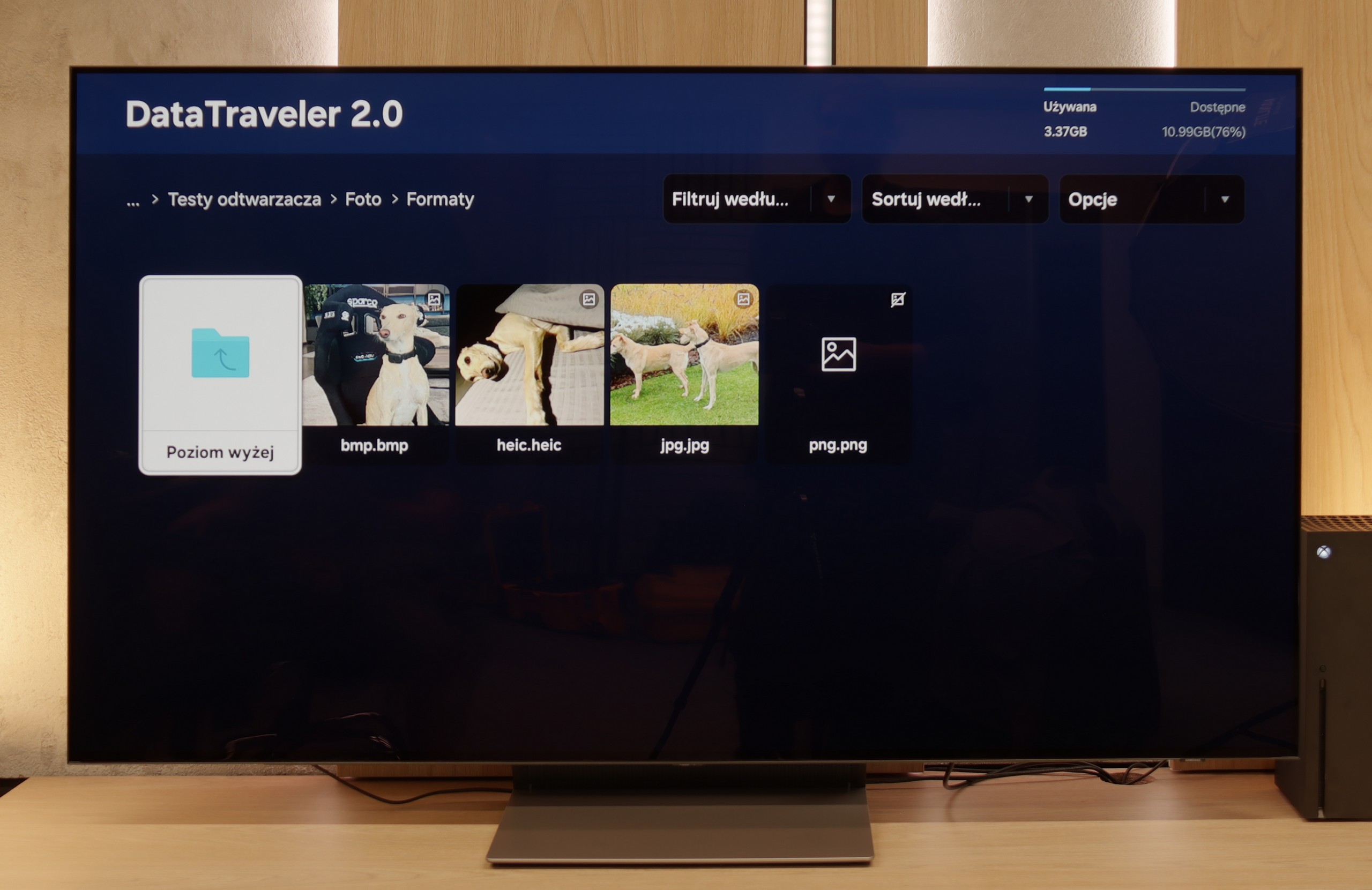
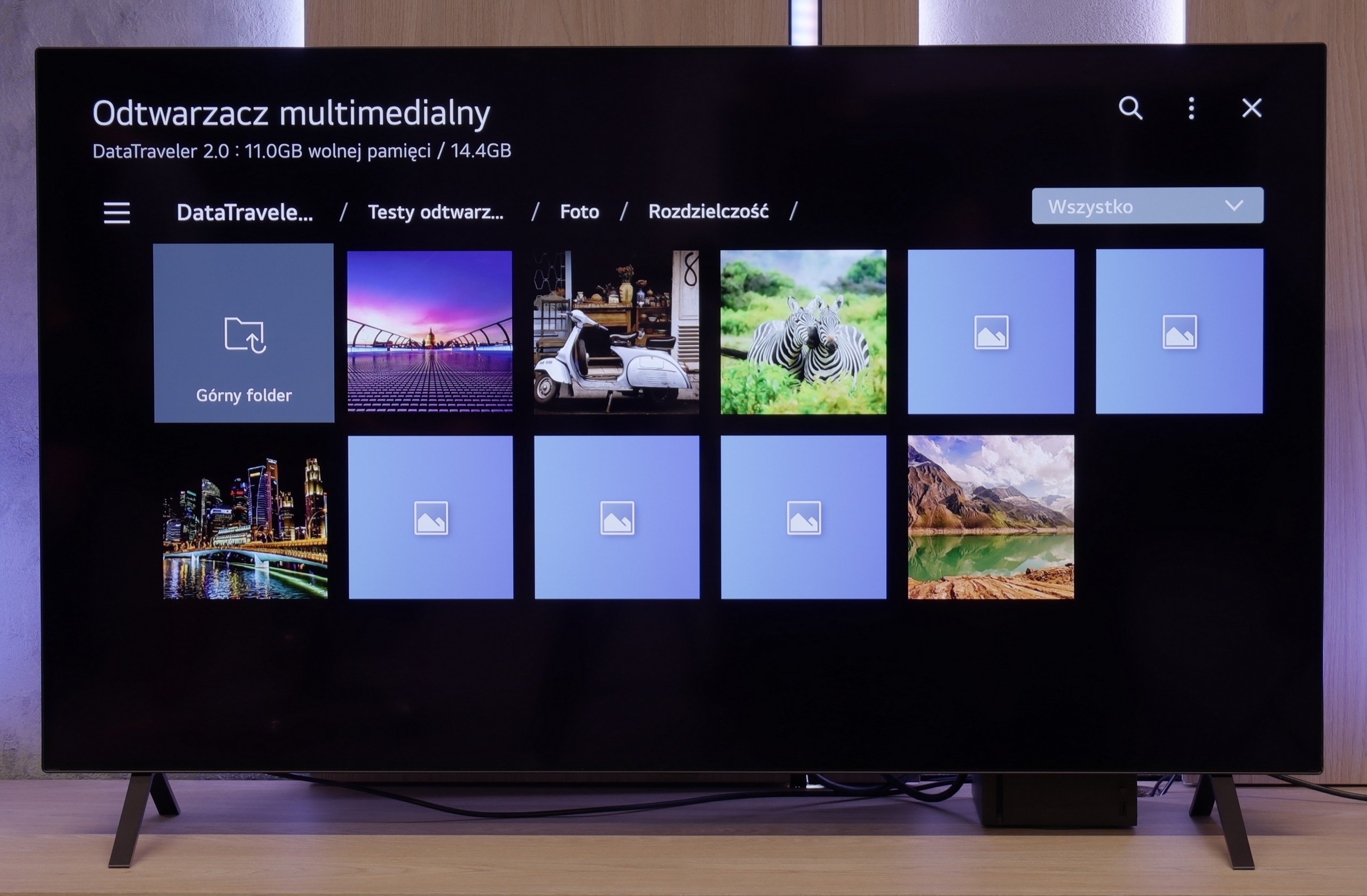
The built-in media player in the S90F is alright and supports quite a few popular formats. Unfortunately, during testing – once again – we encountered issues, despite the manufacturer's claims. The television did not play some formats that are supposedly supported, such as HEIC photos (Apple's version), or SRT and SUB subtitle files. In everyday use for most people, such a player will be sufficient to play a movie from a USB drive, but it’s worth keeping in mind that surprises may occur. Perhaps the situation will be improved in future updates, but at the time of writing this review – it works as it works.
LG B5 handles USB files as it should. Most popular formats work seamlessly, and subtitles – even with Polish characters – are displayed correctly. You can comfortably play a movie from a USB drive or have a weekend slideshow of your holiday photos without worrying that something will go wrong. However, there was a surprise with files in HEIC format – that is, photos saved by Apple devices. While the LG C5 had no issues with them, the B5 stubbornly refused to cooperate and was unable to display them. A little hiccup that probably won’t affect everyone, but it’s worth knowing about.
Apps
8.7/10
8.7/10














































Sound
7.4/10
7/10
- Subjective sound quality:7.4/107/10
- Dolby Digital Plus 7.1:
- Dolby True HD 7.1:
- Dolby Atmos in Dolby Digital Plus (JOC):
- Dolby Atmos in Dolby True HD:
- DTS:X in DTS-HD MA:
- DTS-HD Master Audio:
The S90F plays really quite nicely, with noticeable bass and pretty good dynamics. A definite plus is the support for Dolby Atmos, which allows the TV to sound a bit more “spatial” – of course, as much as the built-in 2.1 set allows 😉. Unfortunately, as is often the case with Samsung, it lacks support for the DTS:X format. So, if you want to take advantage of its capabilities, you'll need to connect your audio equipment directly to the amplifier, rather than to the TV itself – otherwise, it just won't work.
We didn't expect miracles – after all, the LG B5 doesn't have an advanced audio system, and its built-in speakers look... well, just like the majority of flat-screen TVs. And yet – it actually sounded quite nice. The dialogues are clear, the sound isn't booming, and during a quieter viewing, we didn't immediately feel the need to plug in a soundbar. It's just a shame that this year LG decided to cut something that worked in the previous generation. We're of course talking about support for DTS formats, which we won't find in the B5. If you have movies encoded in that format – you'll need to rely on an external player.


